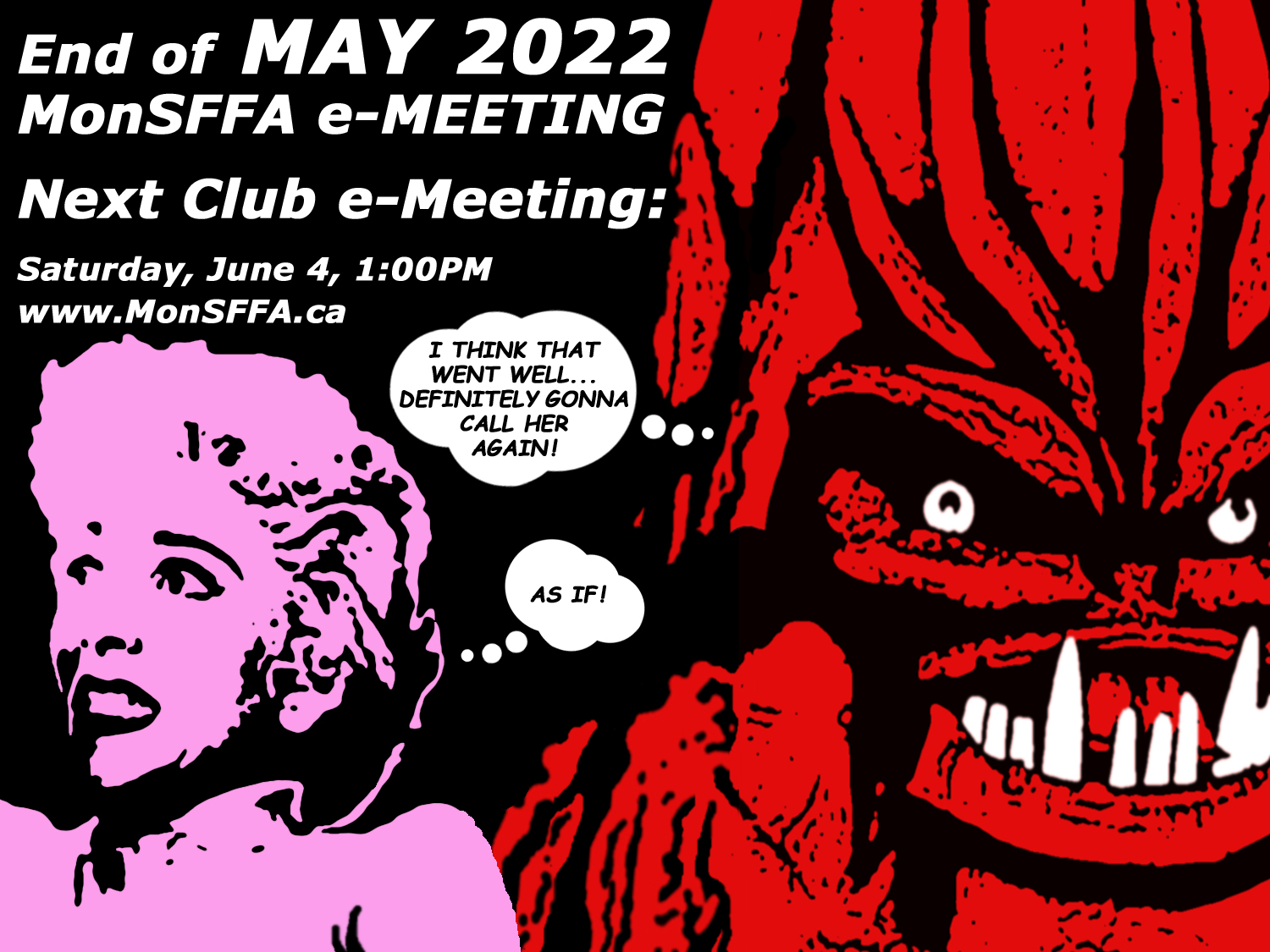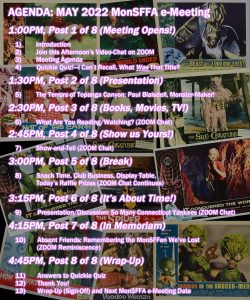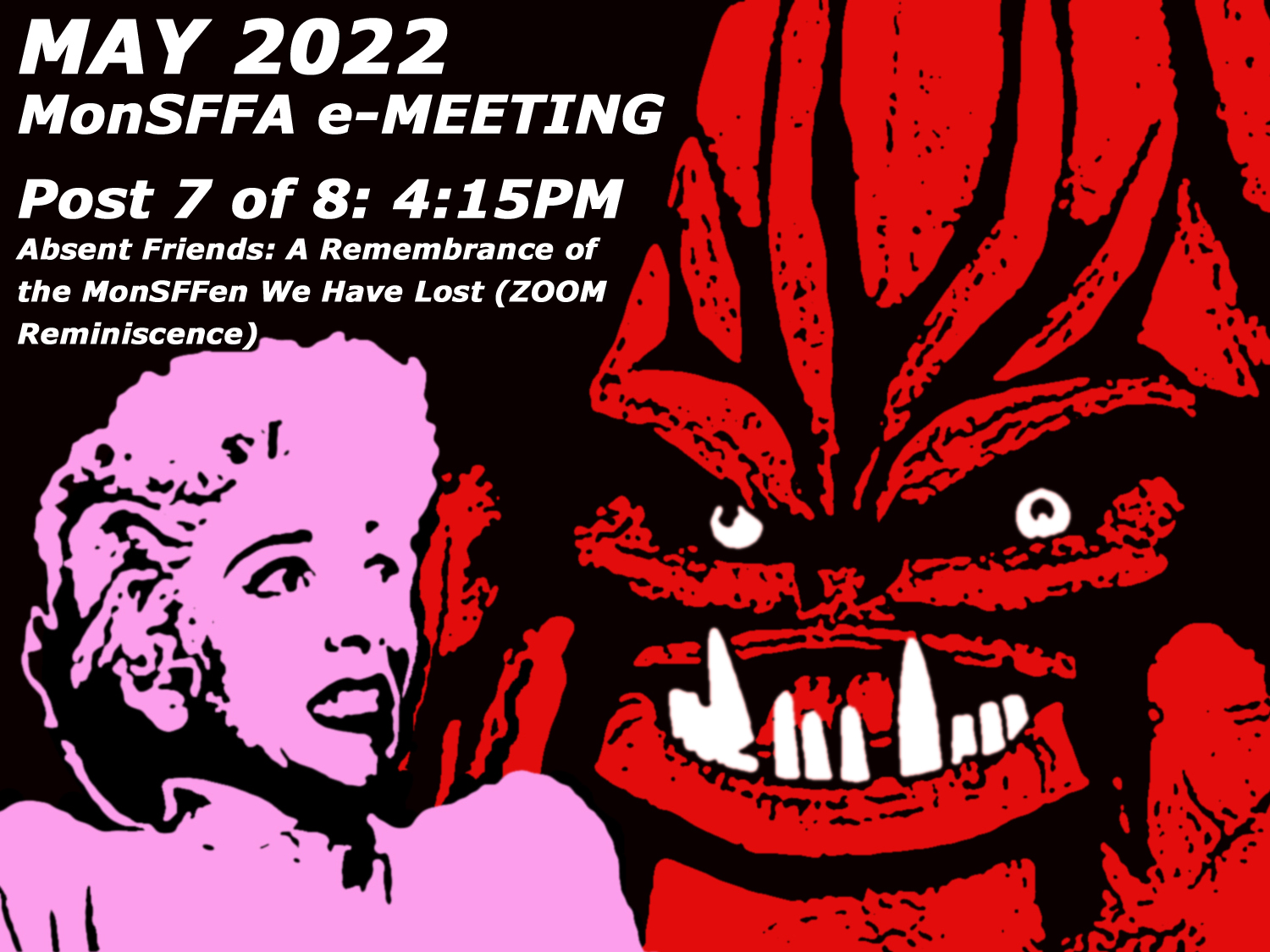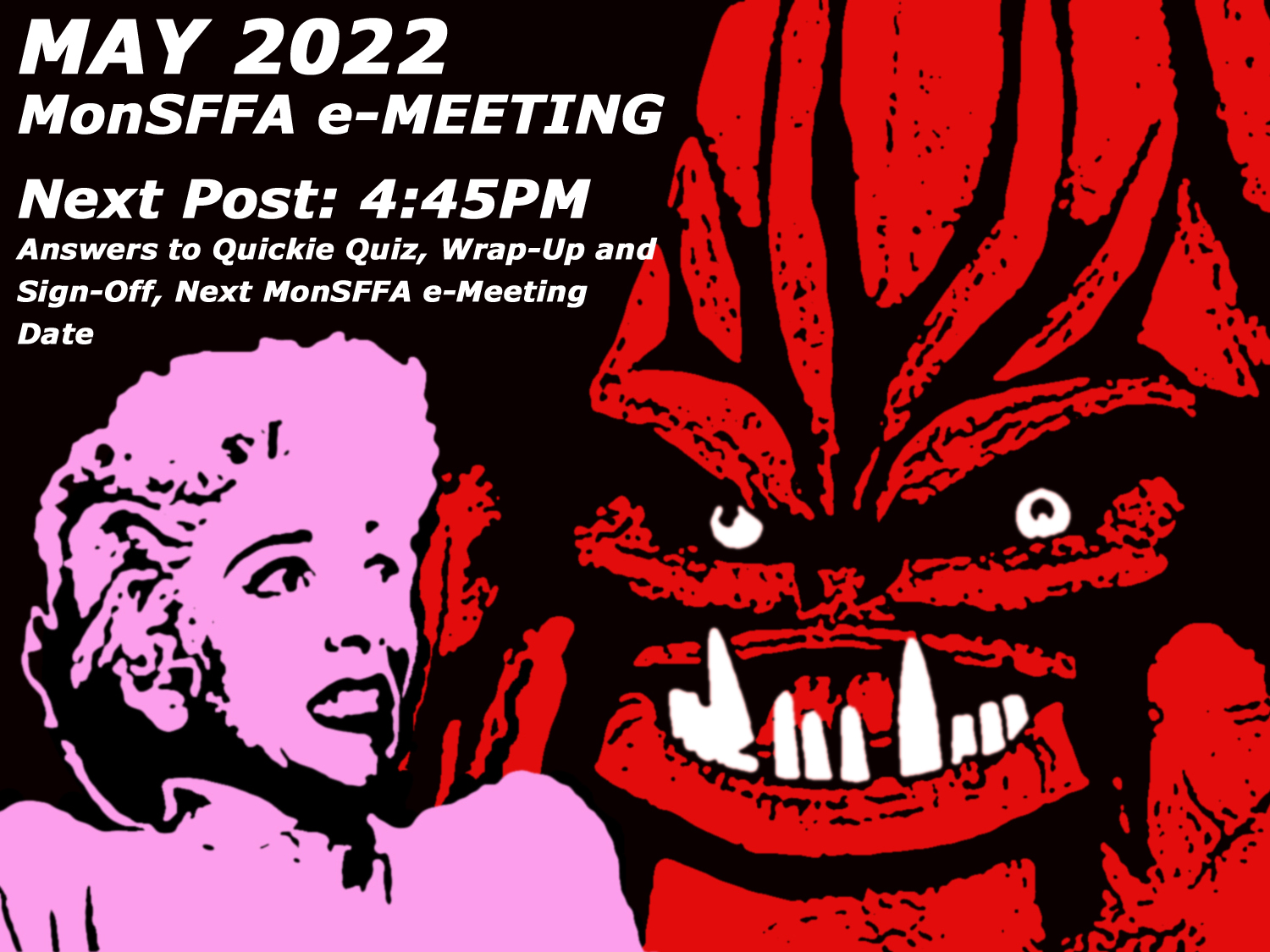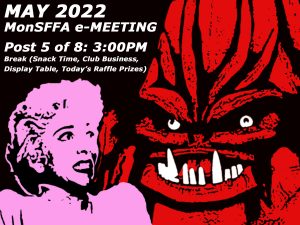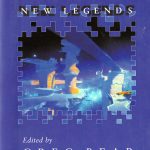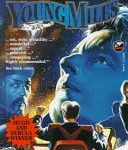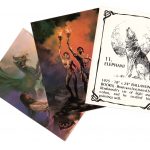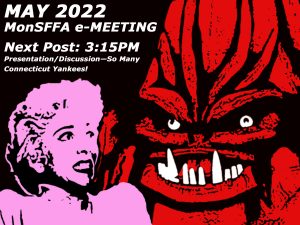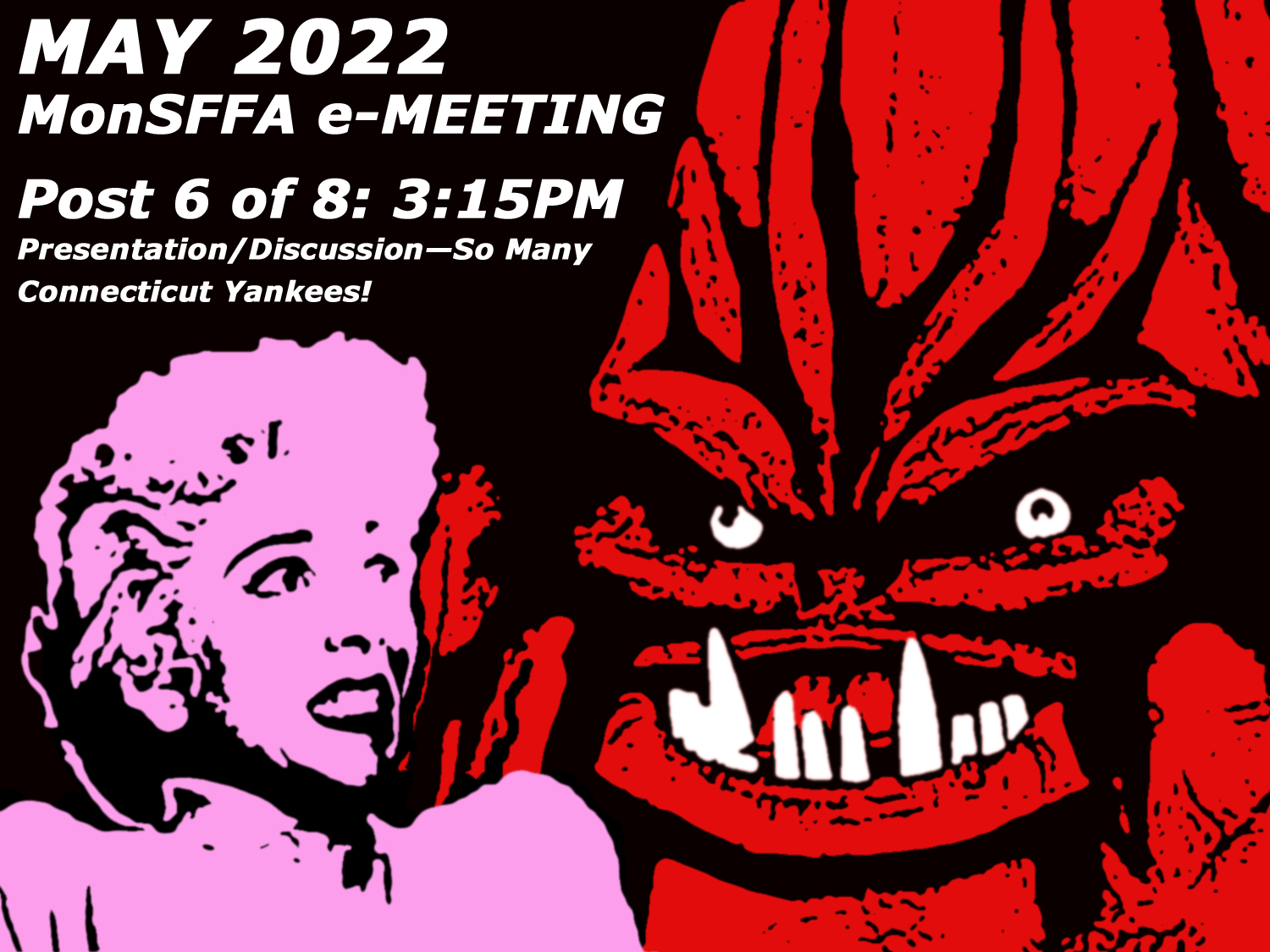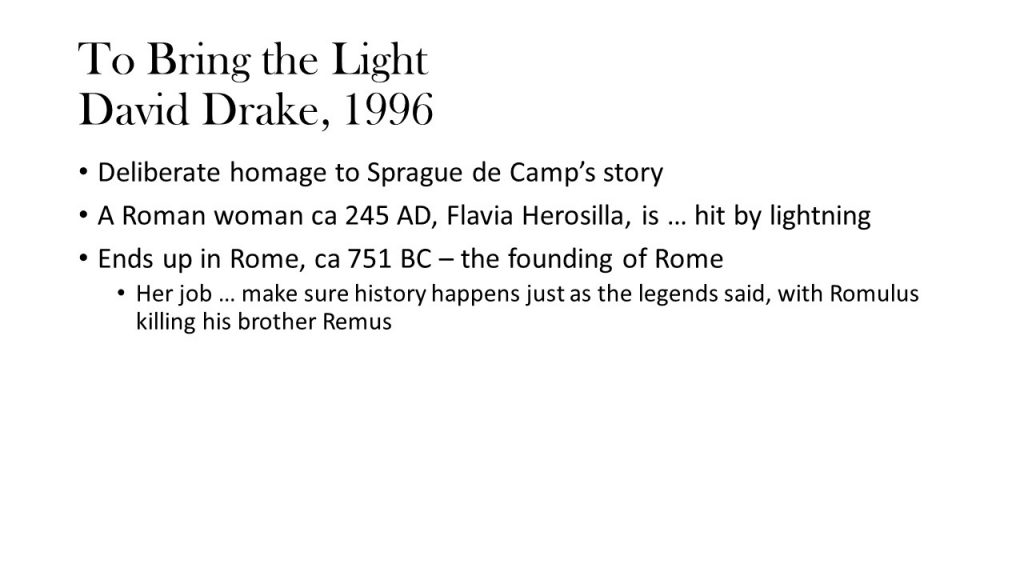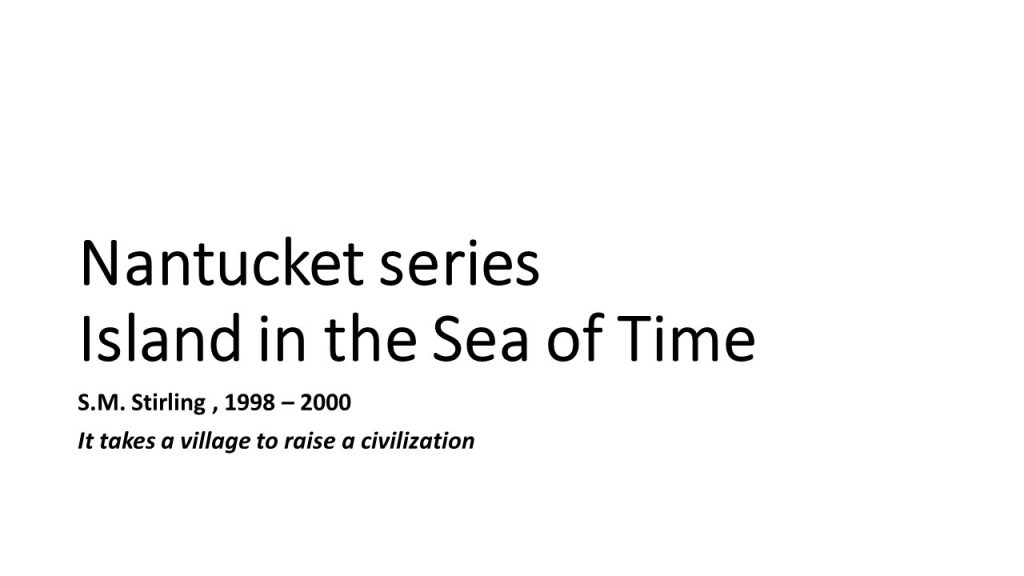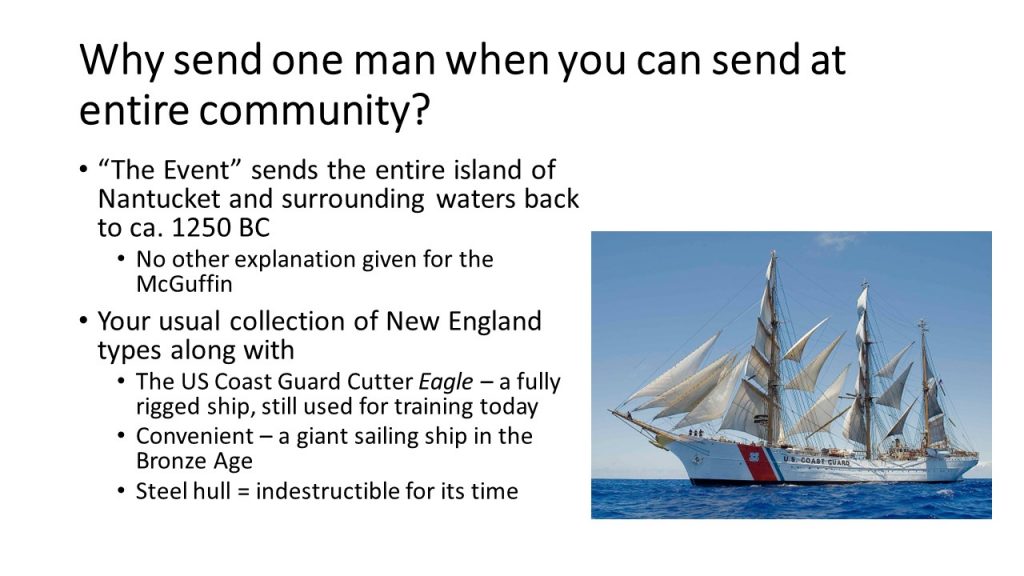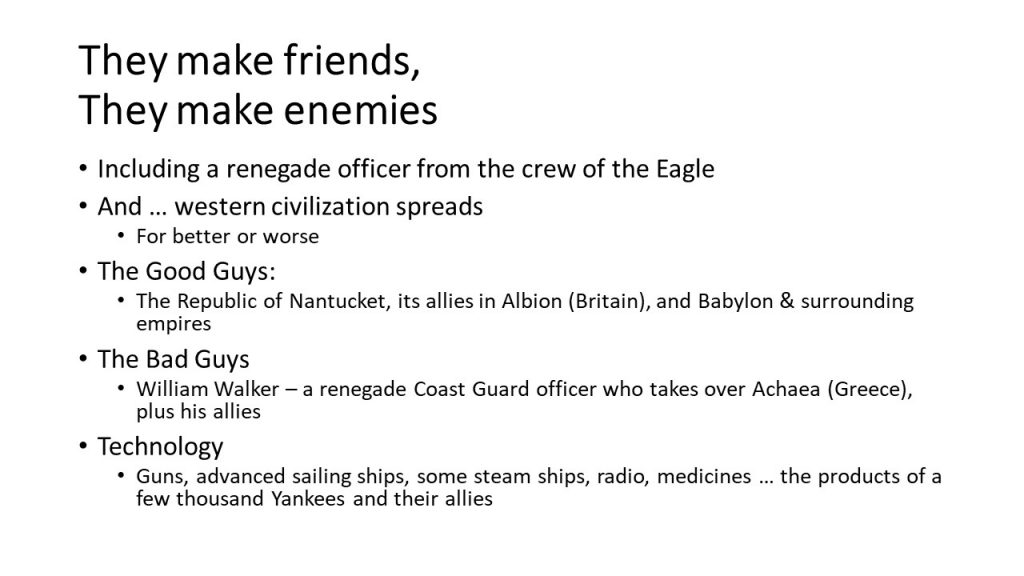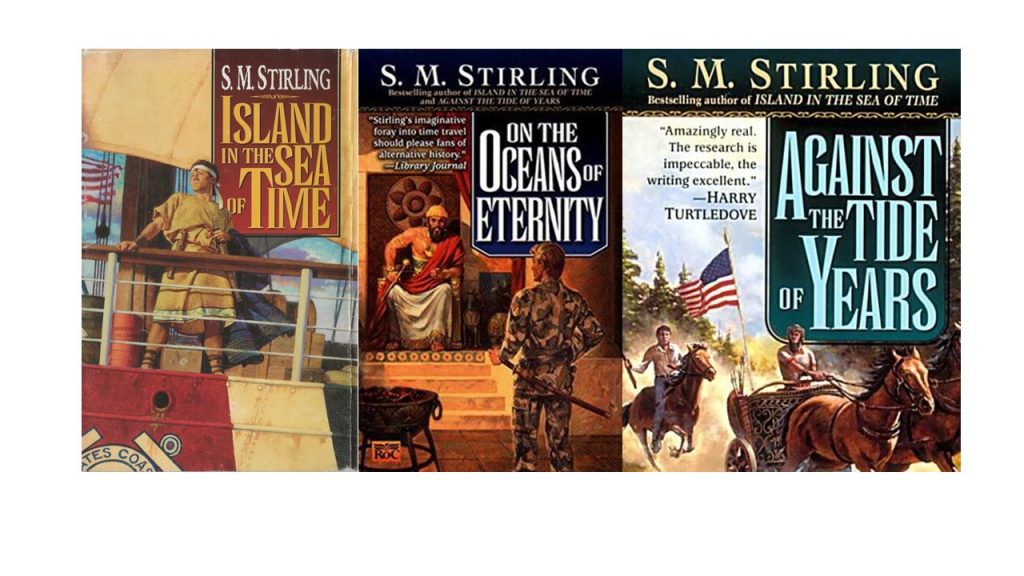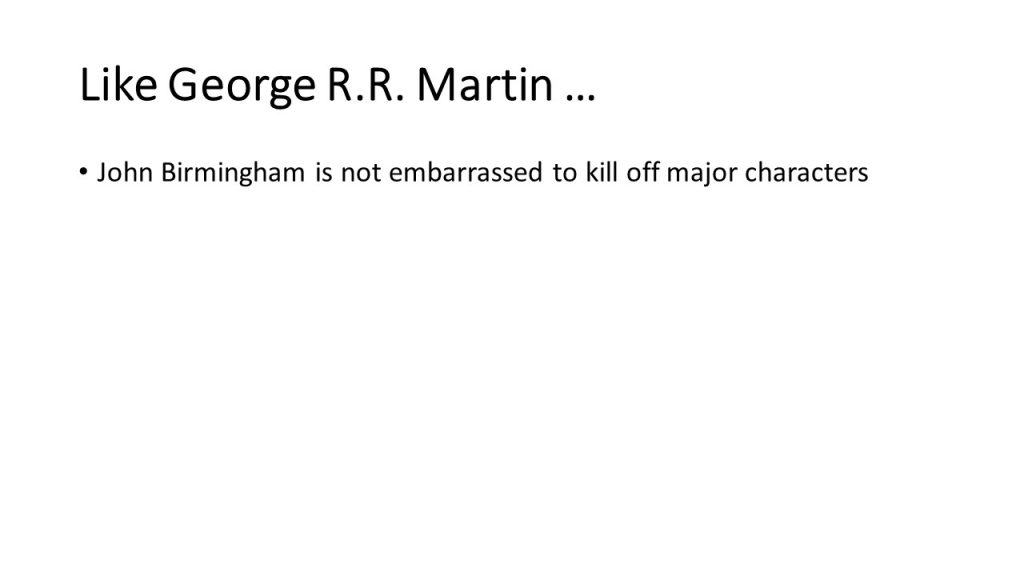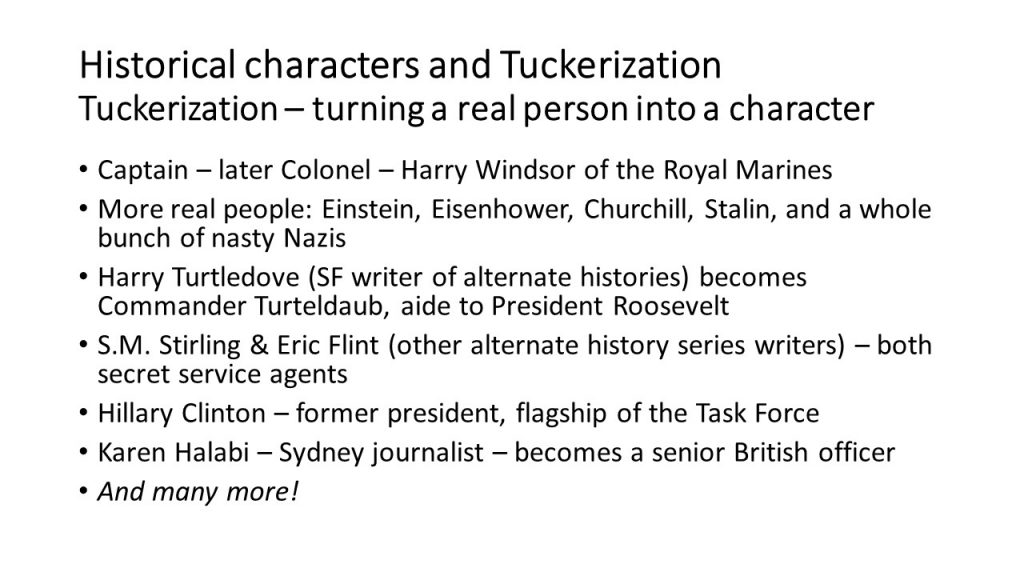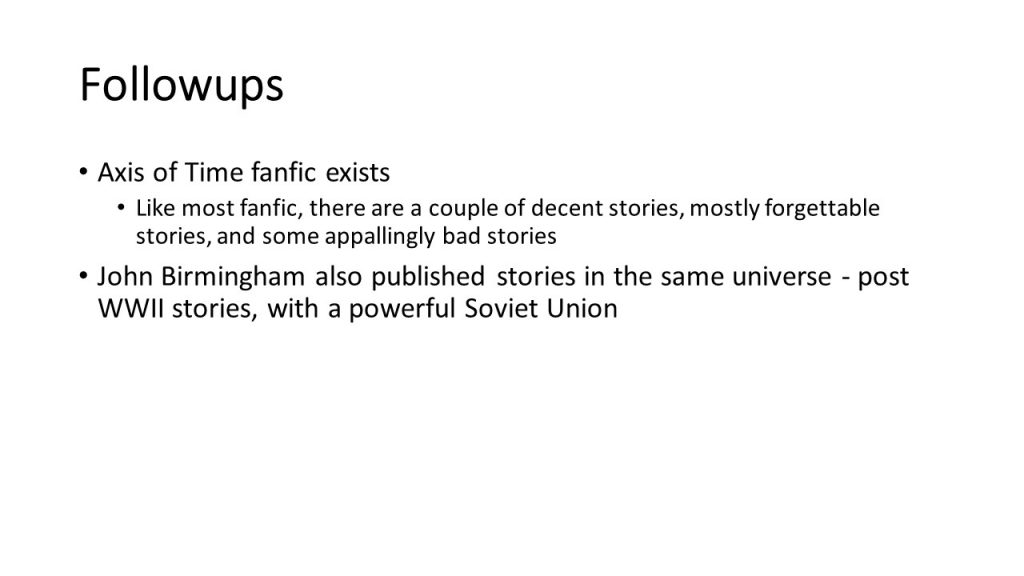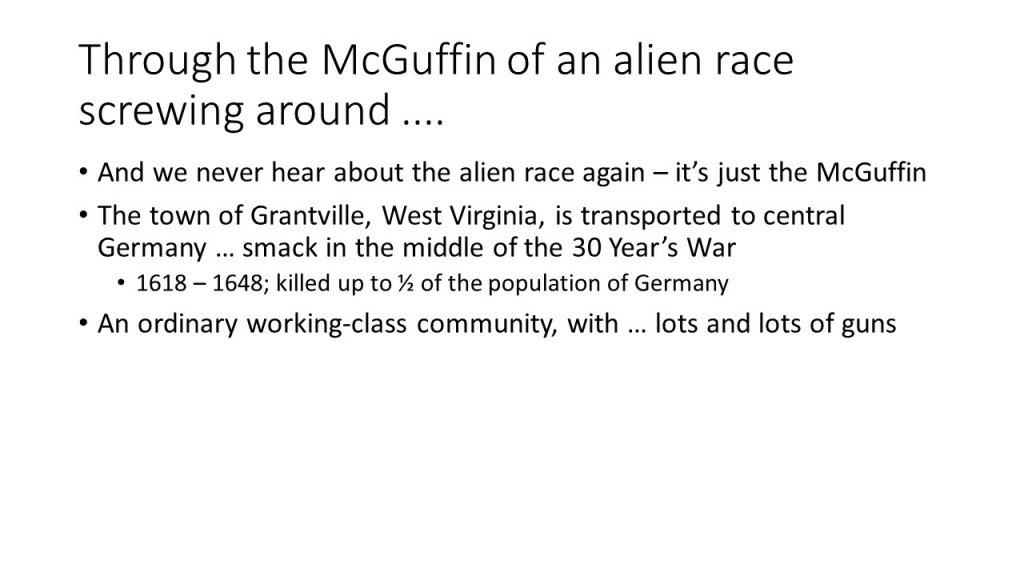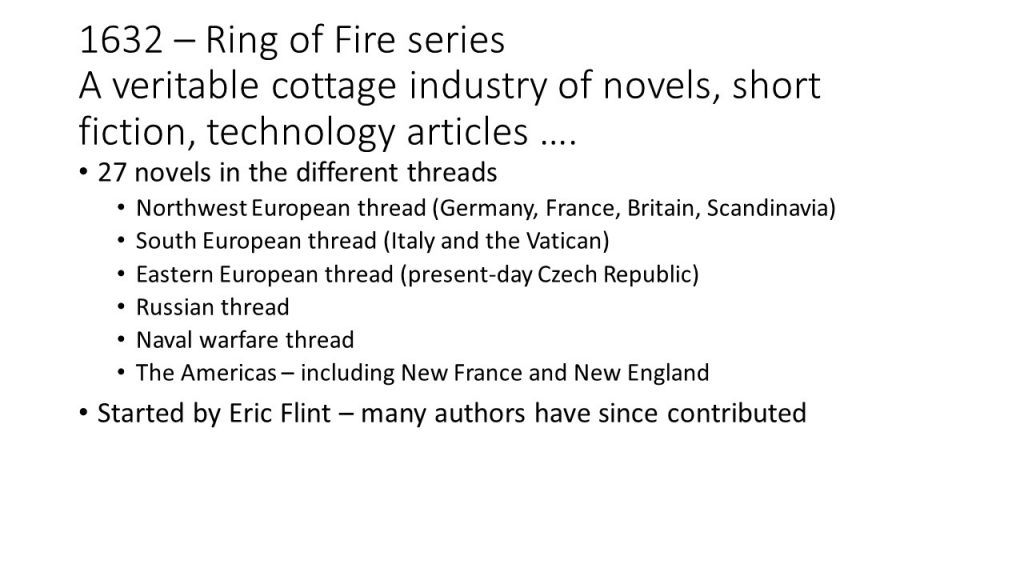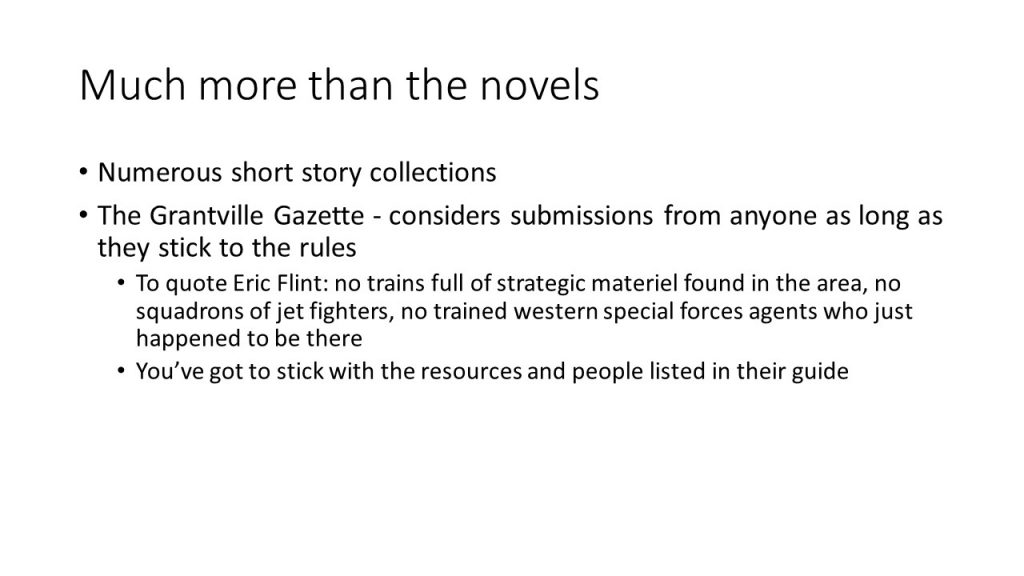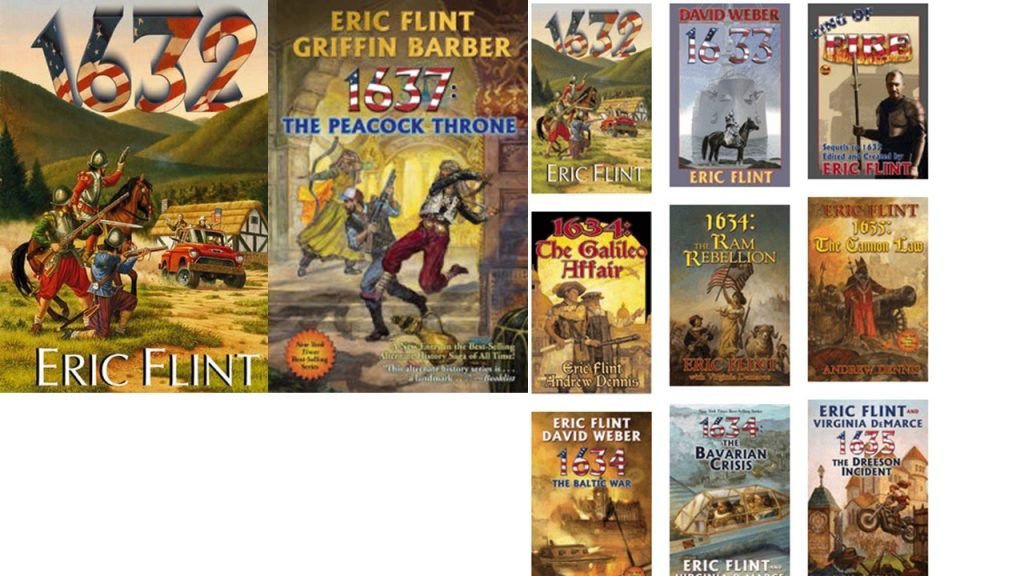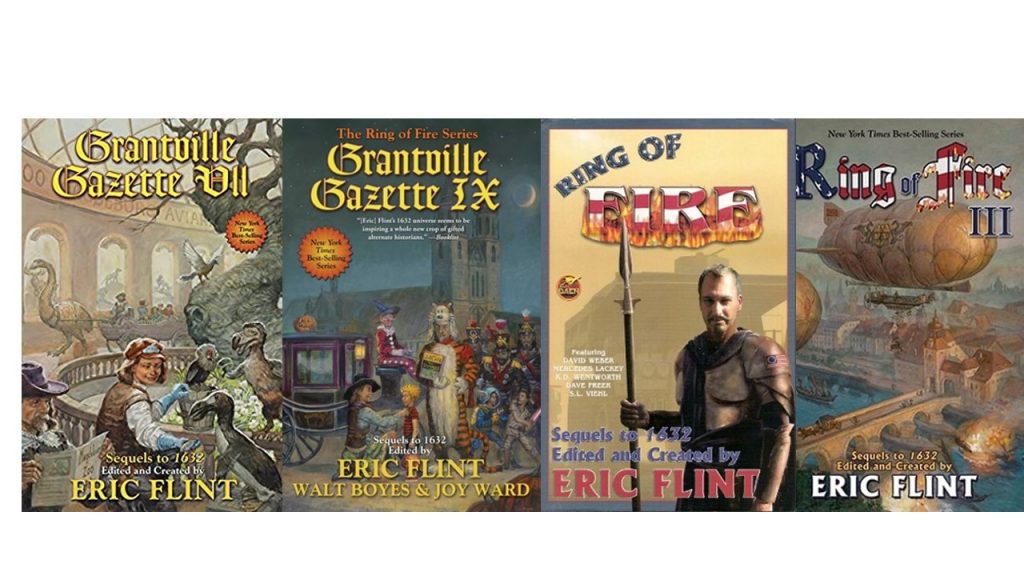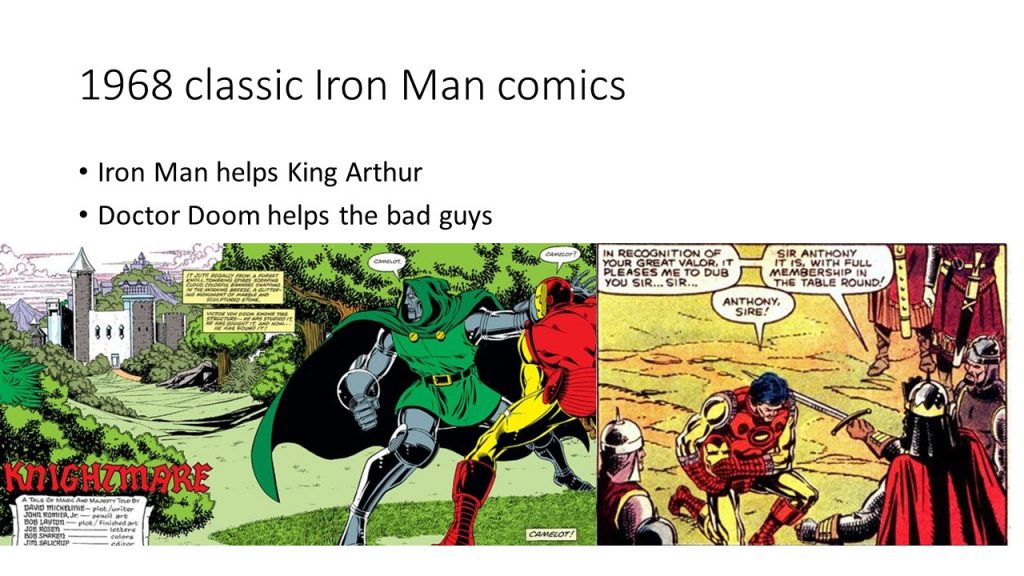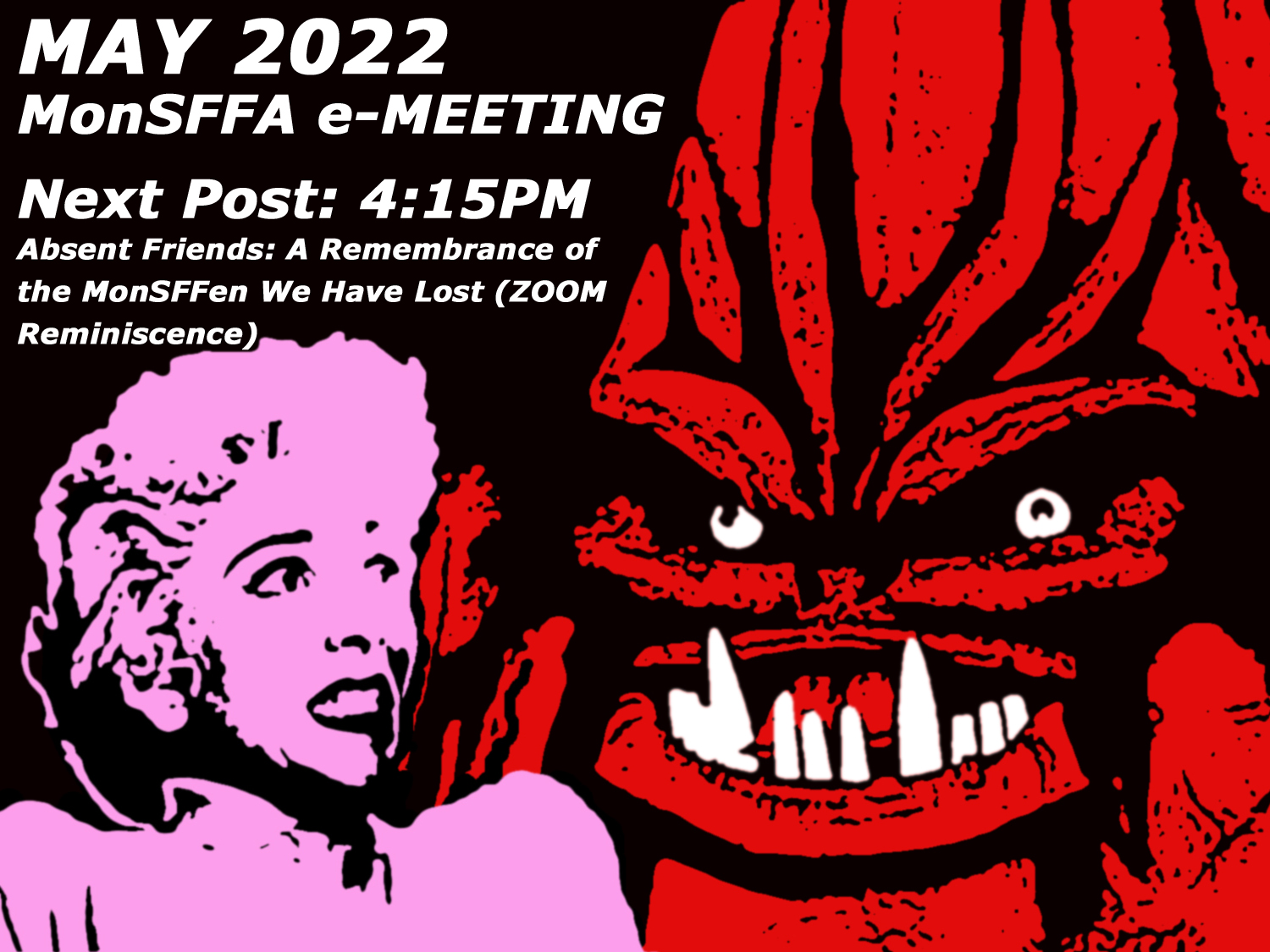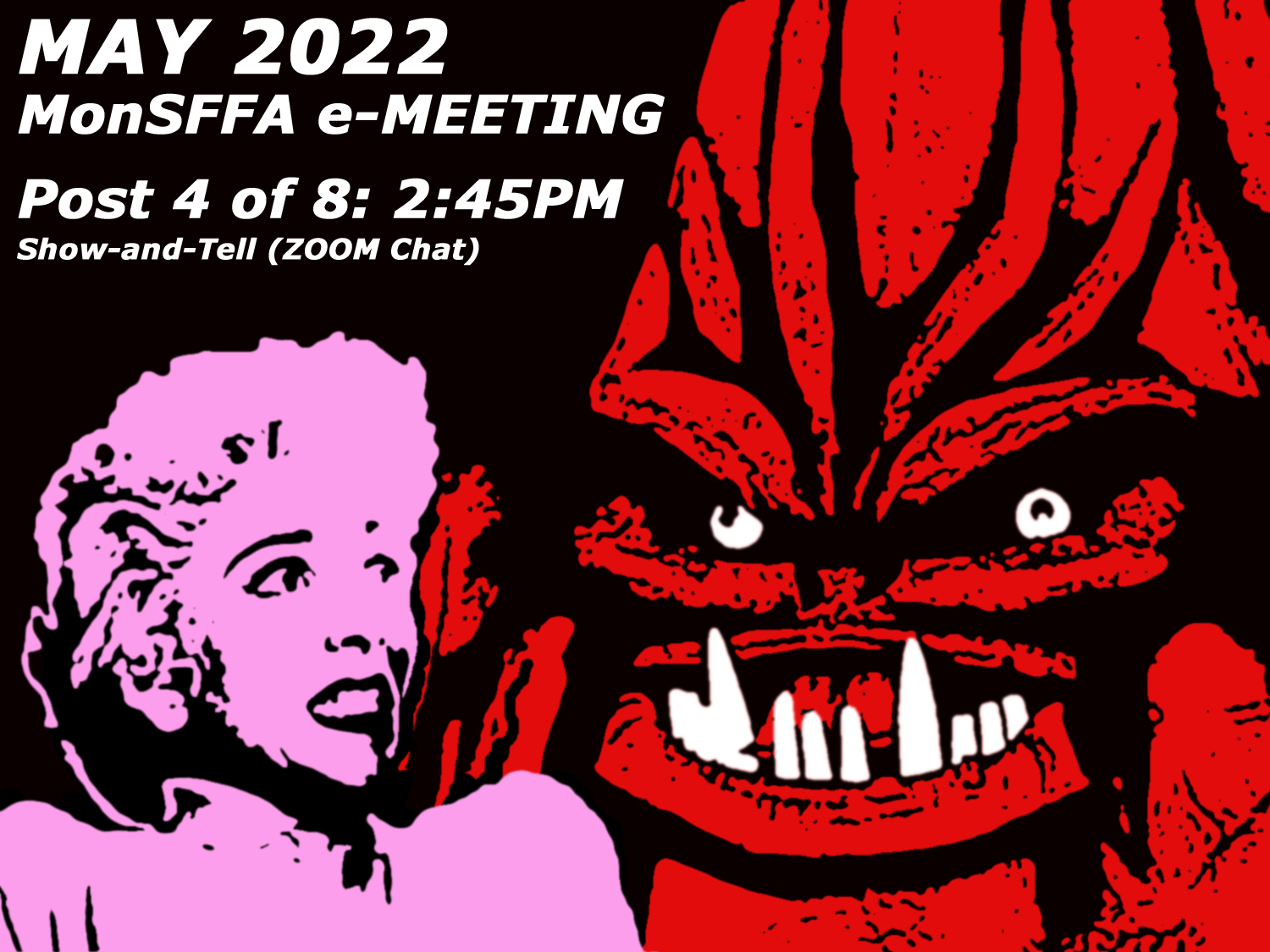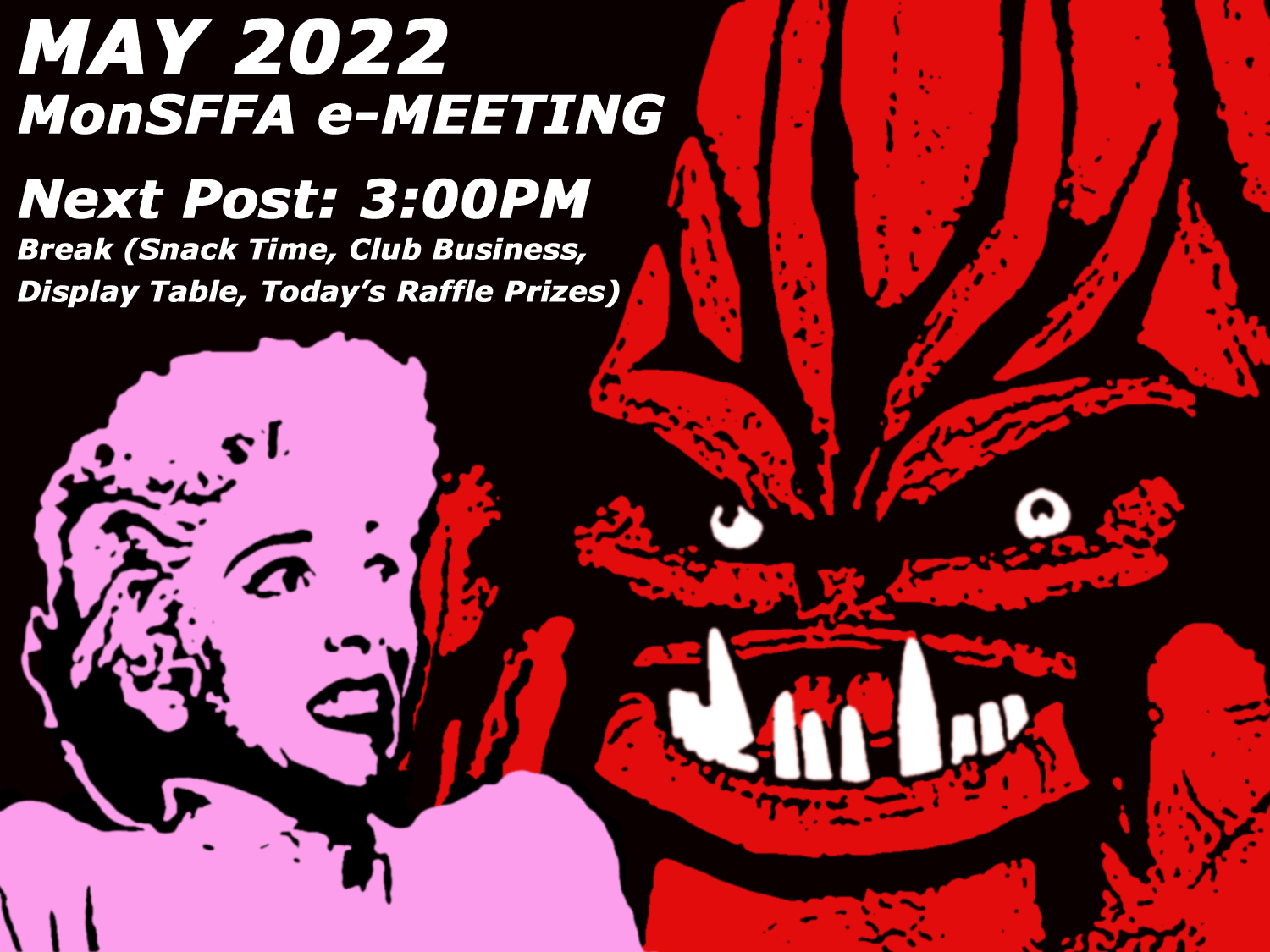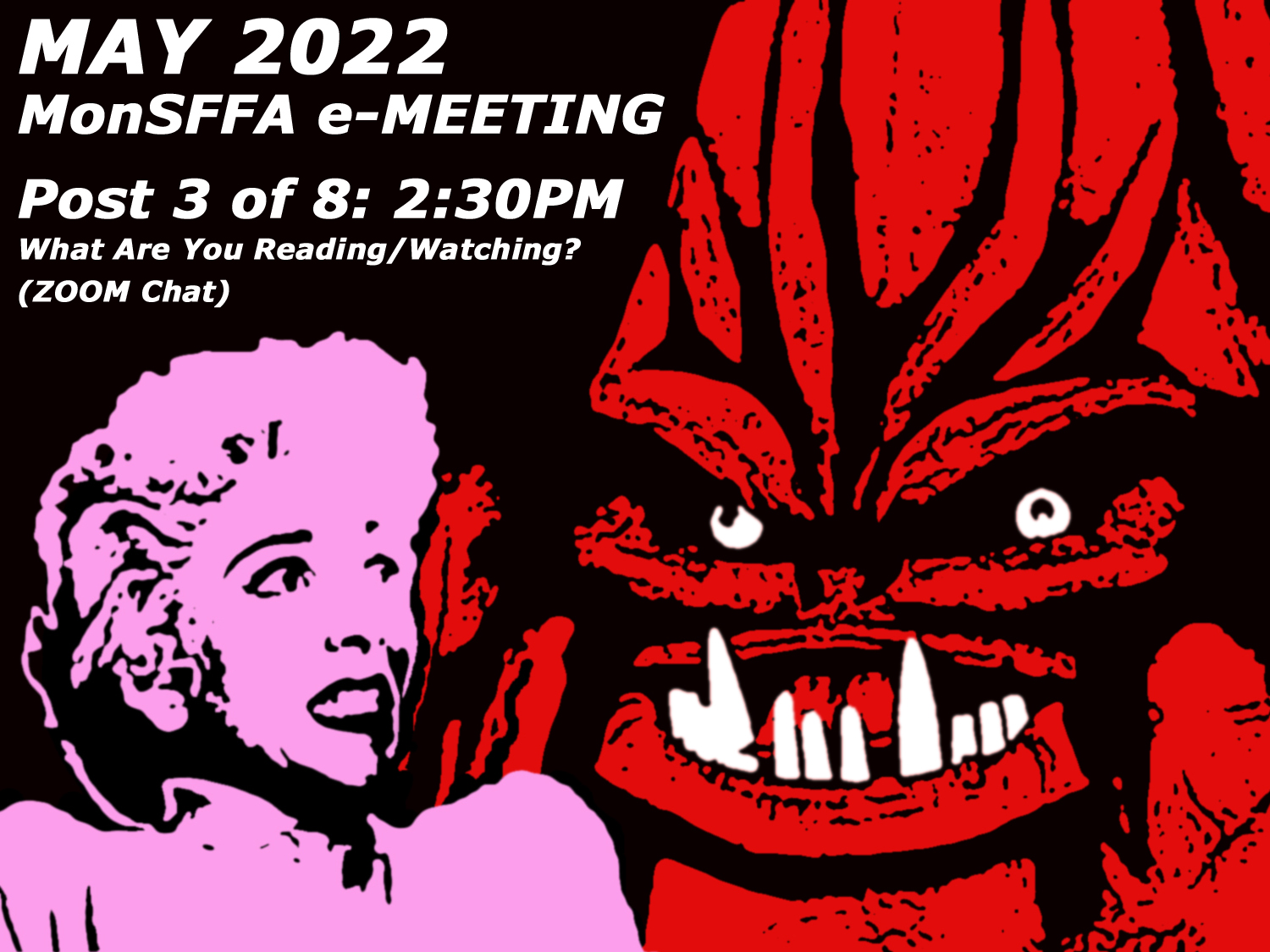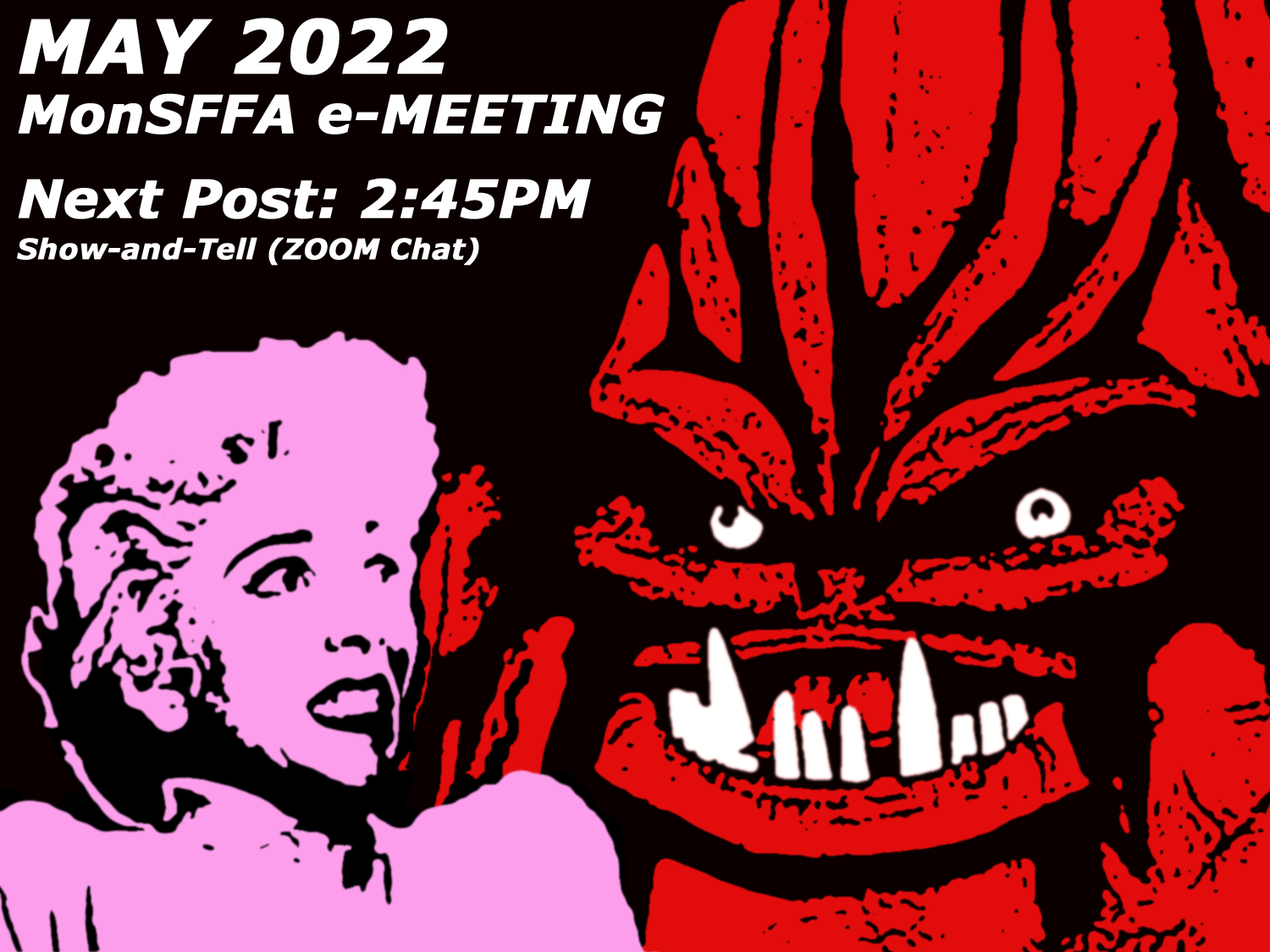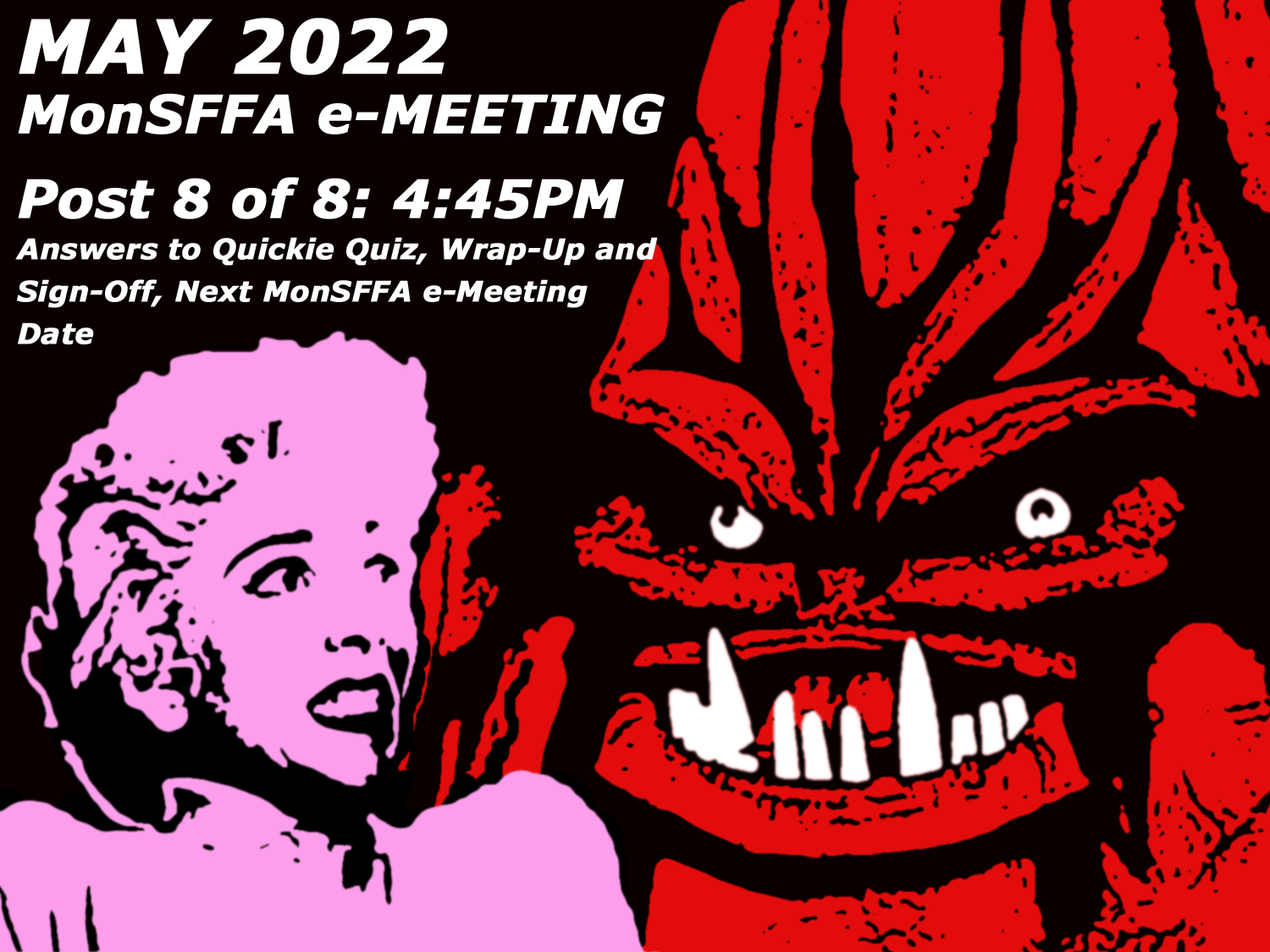 This is our meeting-closing post.
This is our meeting-closing post.
11) ANSWERS TO QUICKIE QUIZ
Here are the answers to the Quickie Quiz we posted at the outset of today’s meeting (see Post 1 of 8). How many titles did you remember correctly?
1) What’s the title of that recent television comedy series about two cops who investigate preternatural incidents, kind of like The X-Files but played entirely for laughs?
Wellington Paranormal (2018-2022), produced in New Zealand and set in the Kiwi capitol, has now completed its final of four “series,” or seasons; overall, 25 episodes were made. The show was a spin-off of the vampire mockumentary What We Do in the Shadows (2014).
Wellington police officers Minogue and O’Leary, our protagonists, originally appeared as minor characters in What We Do in the Shadows. The duo have also starred in a Wellington Paranormal Christmas special, and a number of road safety and COVID-19 PSAs produced in cooperation with the actual New Zealand Police service.
Currently, the show can be viewed in Canada on Bell’s Crave streaming service.
2) What was the name of that sci-fi series about the U.S. Air Force’s exploration and development of space? It was set in the not-too-distant future, and aired on CBS around about the dawn of the real Space Age!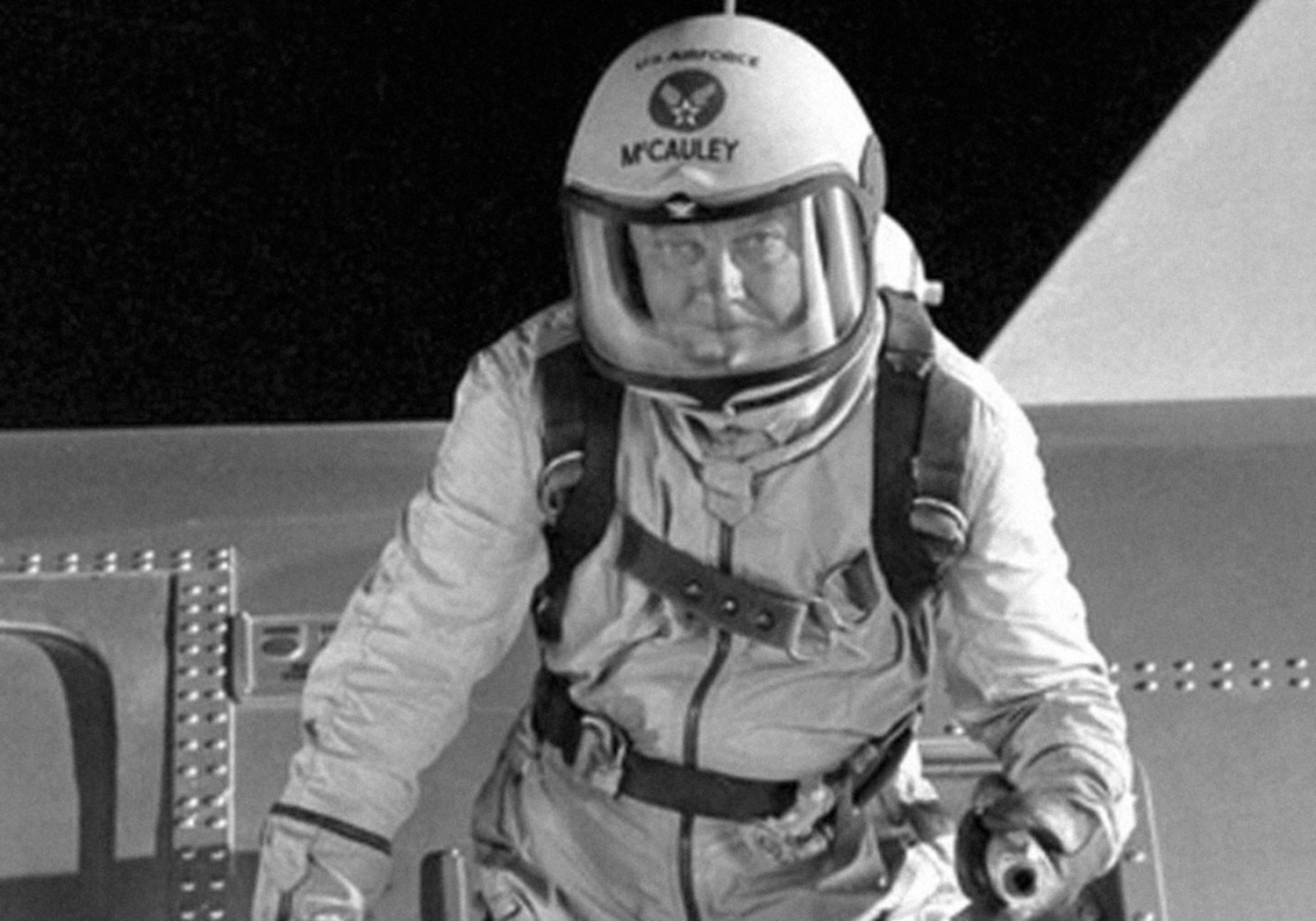
Men into Space (1959-1960) was produced by ZIV Television Programs, creators of first-run syndicated TV series, and initially aired on CBS, later rerun in the U.S. under the title Space Challenge. Over the course of 38 half-hour episodes, the show focused on seasoned, top-flight astronaut Col. Edward McCauley, played by William Lundigan, and dealt with the trials and tribulations of the American space program in the near future, circa mid-1970s through mid-1980s.
Moon missions occur regularly in this imagined future, and a Moon base and space station have been built, with manned flights to Mars attempted. One episode depicted a U.S.-Soviet space race to the Red Planet, with the Americans aborting their undertaking in order to rescue the Russian crew, whose spacecraft had malfunctioned. Stories often involved astronauts applying innovative solutions to technical problems, and several episodes touched on the possibility of intelligent extraterrestrial life.
Men into Space anticipated such disasters as the Gemini 8 and Apollo 13 missions, with episodes that paralleled those real-life emergencies. Among other spot-on predictions like the search for frozen water on the Moon, the program accurately foresaw women astronauts and married couples in space!
The series fairly hewed to science and was authentic in depicting not only successful missions, but failures, as well—sometimes, astronauts died! But the show was, at the same time, unrealistic, with roaring rocket engines, explosions, and even footfalls on the Moon heard in the vacuum of space.
A novelization of Men into Space was penned by noted SF author Murray Leinster and published in 1960, and the Ideal Toy Company marketed a version of Col. McCauley’s space helmet.
3) What was the title of that Time Tunnel episode where hostile space aliens are first injected into the storyline?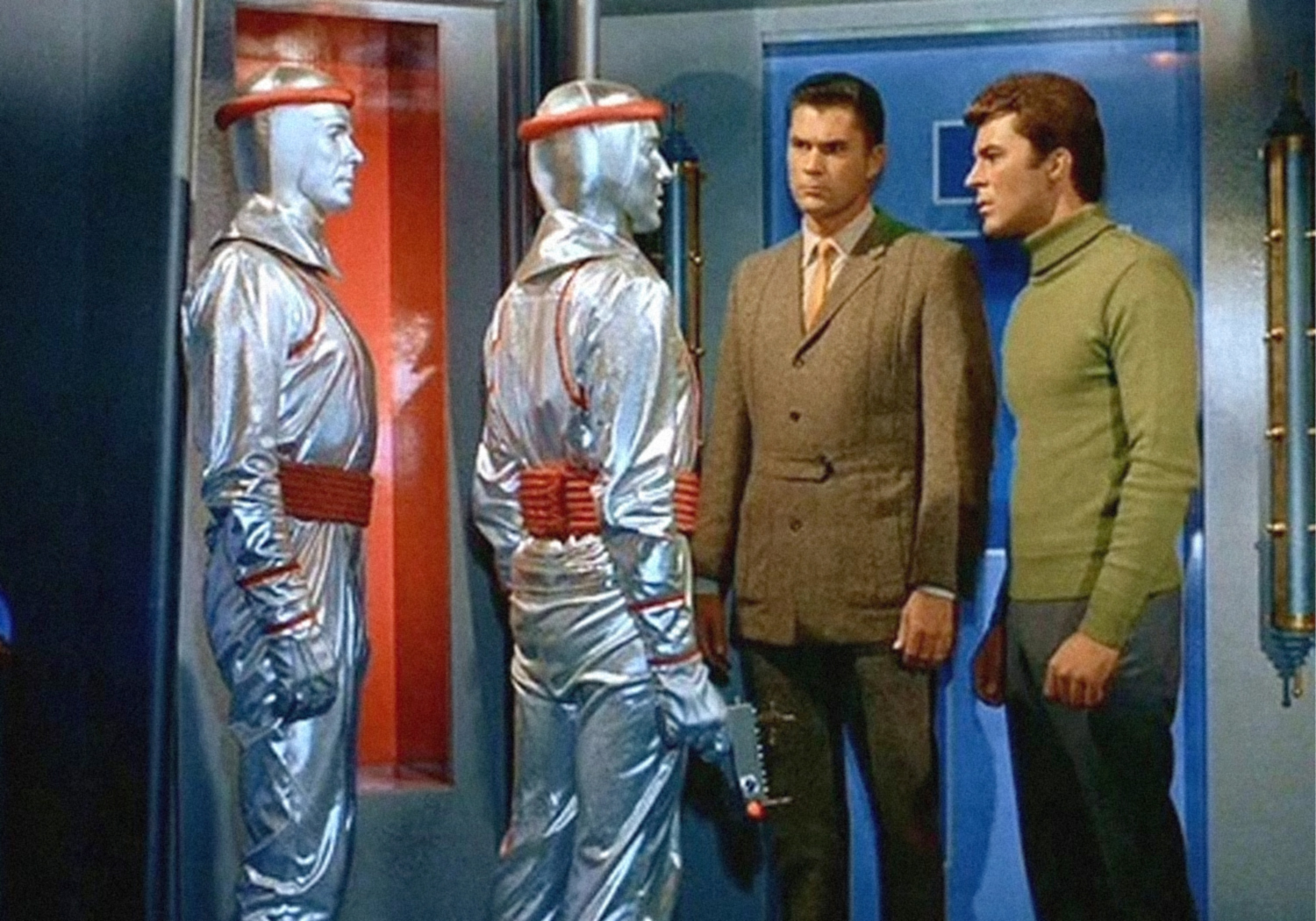
“Visitors from Beyond the Stars” (1967), the 18th episode of the series and first of several involving extraterrestrials. Until this point, the show had been strictly a time-travel adventure, with our protagonists bouncing uncontrollably back and forth through history, lost in time!
Project Tic-Toc is a top-secret, U.S. government effort to build a time machine. But the initiative is a massive, multi-billion dollar experiment and after 10 years of careful testing with only “mice and monkeys” sent back in time, continued funding is threatened when a senator determines that with little to show for the effort, the cost is not worth the expense. Unless a man can be successfully sent through the “time tunnel” and returned safely, the senator intends to cut Tic-Toc’s financial umbilical cord.
Against Tic-Toc director Dr. Doug Phillips’ directive, the project’s headstrong number-two, Dr. Tony Newman, leaps into the tunnel in a bid to meet the senator’s ultimatum. Phillips soon follows after him in a rescue attempt and the two become trapped in time, with the Tic-Toc team in the control room monitoring their coordinates within the timestream and attempting to retrieve them.
With this episode, a new sci-fi angle was introduced, that of extraterrestrials with sinister plans for Earth!
Despite respectable ratings, ABC executives dropped the series after a single season of 30 episodes in favour of a controversial show about cavalryman George Armstrong Custer.
A 1967 promotional novel, The Time Tunnel, was written by Murray Leinster, not to be confused with his own 1964 novel of the same name, unrelated to the series.
4) What was the title of that old sci-fi sitcom starring Catwoman as a beautiful female robot?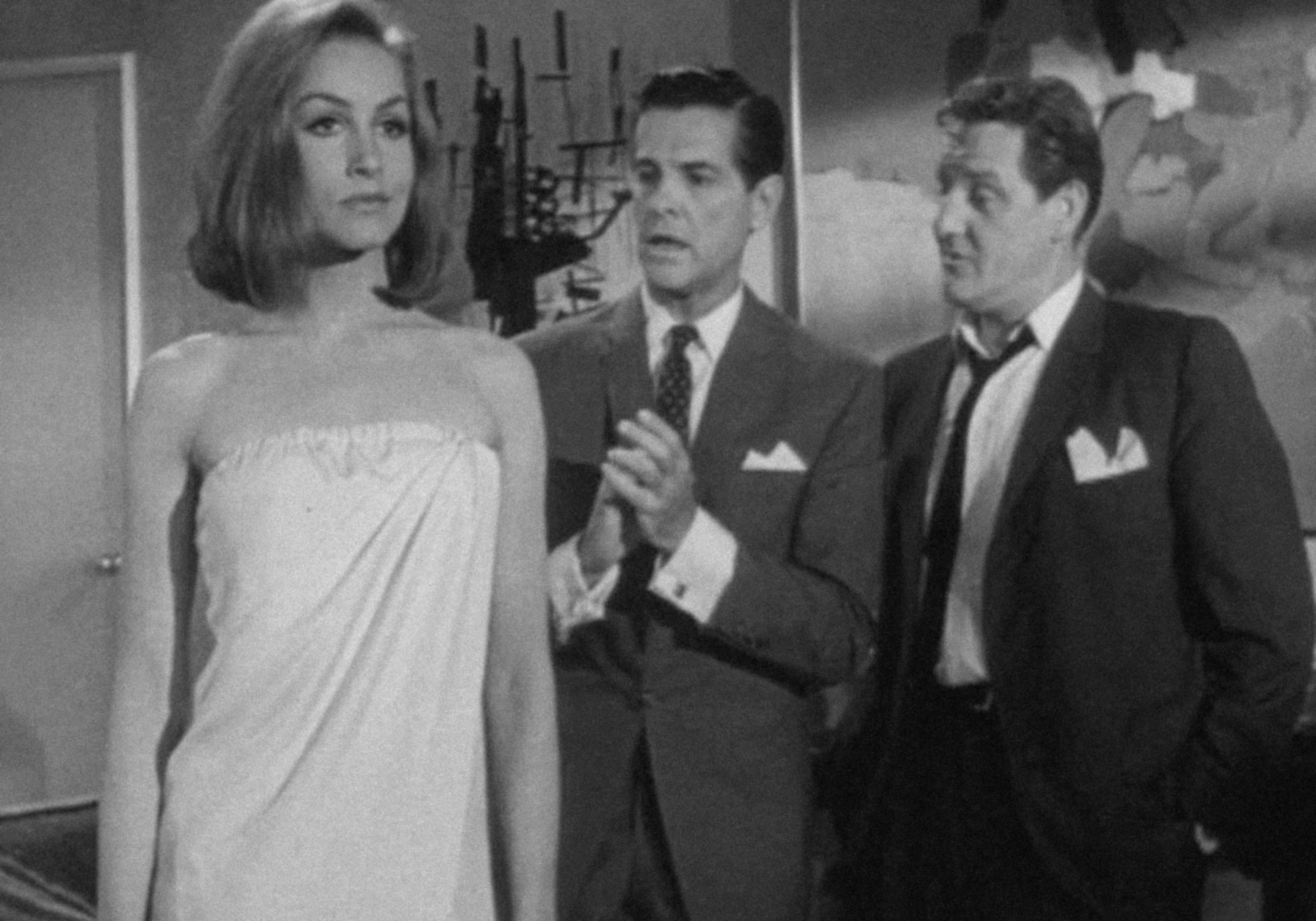
My Living Doll (1964-1965) was a short-lived, CBS science fiction situation comedy about a top-secret, lifelike robot woman, designated AF 709. Jack Chertok, who had produced the popular My Favourite Martian (1963-1966), was behind the show. In formulating the series outline, he was apparently inspired by the mythological tale of Pygmalion and Galatea.
AF 709 is an advanced robot designed for the space program by scientist Dr. Carl Miller and assembled in secret as a working prototype. But she slips out of Miller’s lab and frantic to find her, he enlists the help of his friend, Dr. Robert “Bob” McDonald, a consulting psychiatrist with the Space Research Center. McDonald soon finds her wandering the streets clothed in but a bedsheet and takes her back to his apartment. Dr. Miller learns that he’s been unexpectedly and suddenly reassigned for a few months to Pakistan and entrusts McDonald with her care. Miller is adamant that her real nature be kept a secret and McDonald comes up with the cover name Rhoda to that end.
Intrigued with the opportunity to teach Rhoda how to become “the perfect woman,” which McDonald defines as one who “does as she’s told” and “keeps her mouth shut”—not a particularly enlightened viewpoint by modern standards—the set-up is in place for the show to follow.
Many episodes dealt with Rhoda’s fish-out-of-water dealings with human foibles and, as the series progressed, her gradually developing, or at least emulating, human emotion.
Comedic actor Bob Cummings played McDonald but was unhappy with the show’s focus on Julie Newmar’s Rhoda, and left the show after 21 episodes. The series lasted only another five episodes, and Newmar would shortly take on the role for which she is most famous, that of Catwoman in the first two seasons of TV’s Batman (1966-1968).
Rhoda’s designation, AF 709, was purportedly the inspiration for the so-named Seven of Nine, introduced to Star Trek canon in Voyager’s fourth-season premiere!
5) What was the name of that low-budget, sci-fi/comedy movie about a voluptuous female android? You know the one… The film starred 1980’s Playmate of the Year, a young, novice centerfold model and actress from Canada!
Galaxina (1980) stars Vancouver-born Dorothy Stratten, Playboy magazine’s August 1979 Playmate of the Month, later selected as 1980’s Playmate of the Year. The 20-year-old blonde beauty’s acting career had just begun when Stratten was murdered by her estranged husband only a couple of months after Galaxina’s release. Her tragic story was told in the subsequent TV movie Death of a Centerfold (1981) and feature film Star 80 (1983) with, respectively, Jamie Lee Curtis and Mariel Hemingway playing the ill-fated Stratten.
For the most part panned by critics, the movie was a fan favourite on the fantasy-film festival circuit of the day, though not necessarily for reasons having anything to do with quality. Something of a comical science fantasy/western, the film pays parodic homage to sci-fi franchises Star Trek and Star Wars, among other properties. Objectively, Galaxina is a laborious, silly sci-fi B-movie that likely acquired cult status largely as a result of the shocking real-life fate of its star.
6) What was the title of that original-series Star Trek episode, the one where the Enterprise first time-travels?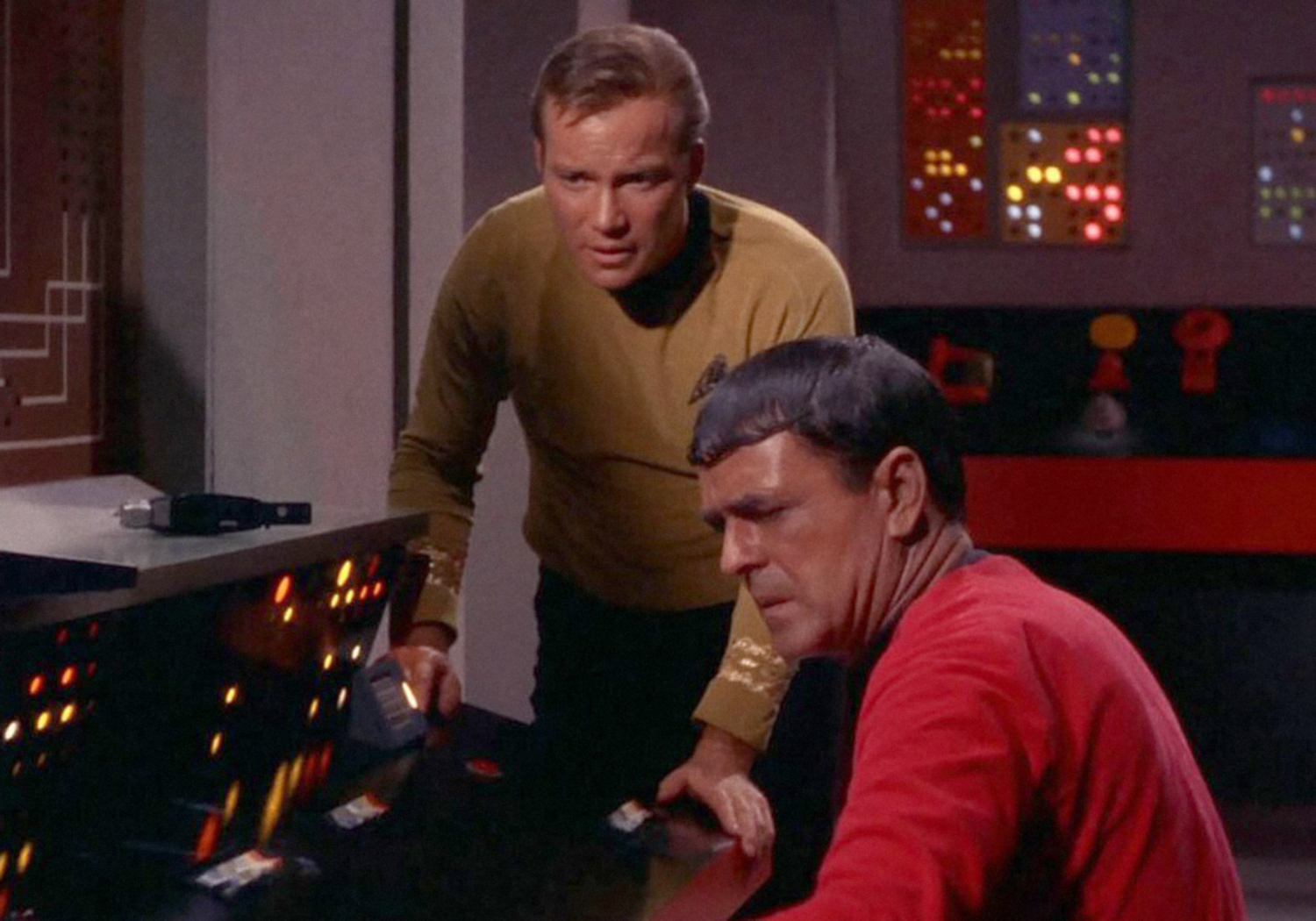
“The Naked Time” (1966), an early season-one episode in which the climatic full-power restart of the Enterprise’s warp engines is attempted in order to yank the ship out of spiralling orbital decay and certain doom! However, the cold-state mixing of matter and antimatter so as to produce the required controlled implosion is a risky procedure based on an unproven theory. The wildly desperate gamble works and the ship is saved, but in the process, Enterprise is propelled at impossible speed through a time-warp three days backwards in time!
A means of time-travel having now been successfully demonstrated, notes Spock, intriguing prospects are opened. “We can go back in time, to any planet, any era.” Kirk nods and replies, “We may risk it someday, Mr. Spock.”
This story was originally intended as a two-parter, with the events of “Yesterday is Tomorrow” to have constituted the second half of the narrative. But in the end, “The Naked Time” was scaled back to become a standard, single-hour, stand-alone episode, with “Yesterday is Tomorrow” later produced as a stand-alone, too.
7) What was the name of that monster movie with a giant, stop-motion, dragon-like creature that nests in the art-deco spire of the Chrysler Building and preys on the citizens of New York City?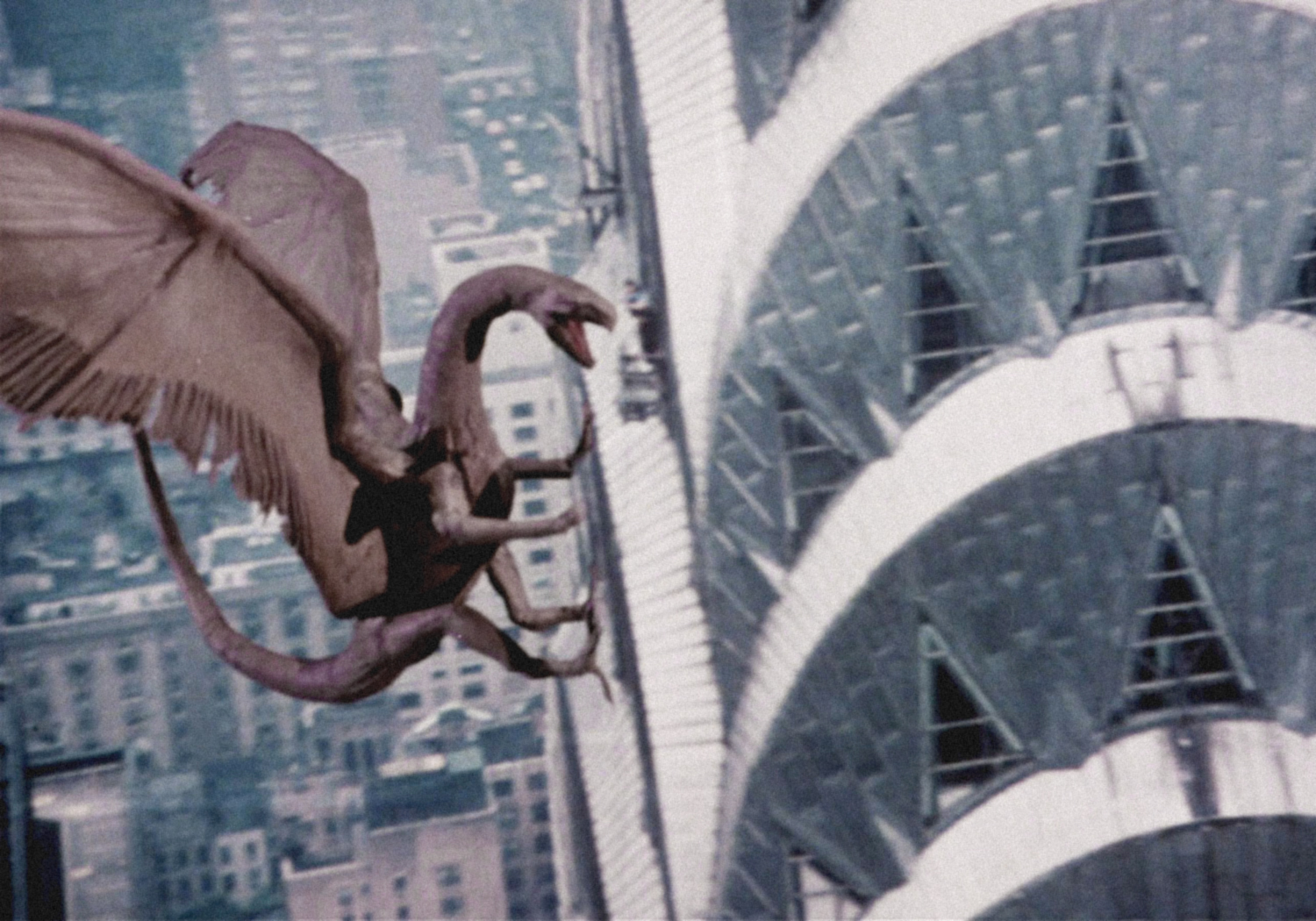
Q (1982), also called Q: The Winged Serpent, was written, directed, and co-produced by Larry Cohen.
Reports of a monstrous flying lizard that attacks and devours people on the rooftops of New York City perplexes two NYPD detectives, who are also dealing with a spate of ritualistic murders linked to a neo-Aztec cult.
Meanwhile, a petty criminal has stumbled upon this flying lizard’s nest and demands a million dollar ransom from the city to reveal its location, in addition to his receiving immunity from prosecution for his crimes. He leads police to the nest, atop the Chrysler Building, but the creature—apparently, the Aztec deity Quetzalcoatl—isn’t there. An unhatched egg, however, is machine-gunned and the infant lizard that emerges from the fractured shell is killed. When the adult creature later returns, police open fire with everything they’ve got and the monster is bloodied, and finally succumbs to its wounds, falling to the streets below.
The film ends in a derelict building across town, where another of the winged serpent’s eggs hatches!
The film received mixed reviews at the time of its release and failed to recoup its production costs. It has since gained an audience appreciative of a good old-fashioned monster movie in the tradition of King Kong (1933), The Beast from 20,000 Fathoms (1953), The Giant Behemoth (1959), and Jack the Giant Killer (1962). Randall William Cook and David Allen were responsible for the stop-motion work that brought Quetzalcoatl to life.
8) What was the title of that Star Trek: Deep Space Nine episode where Quark and company, en route to Earth, end up travelling back through time and crash-landing their shuttle near Roswell, New Mexico?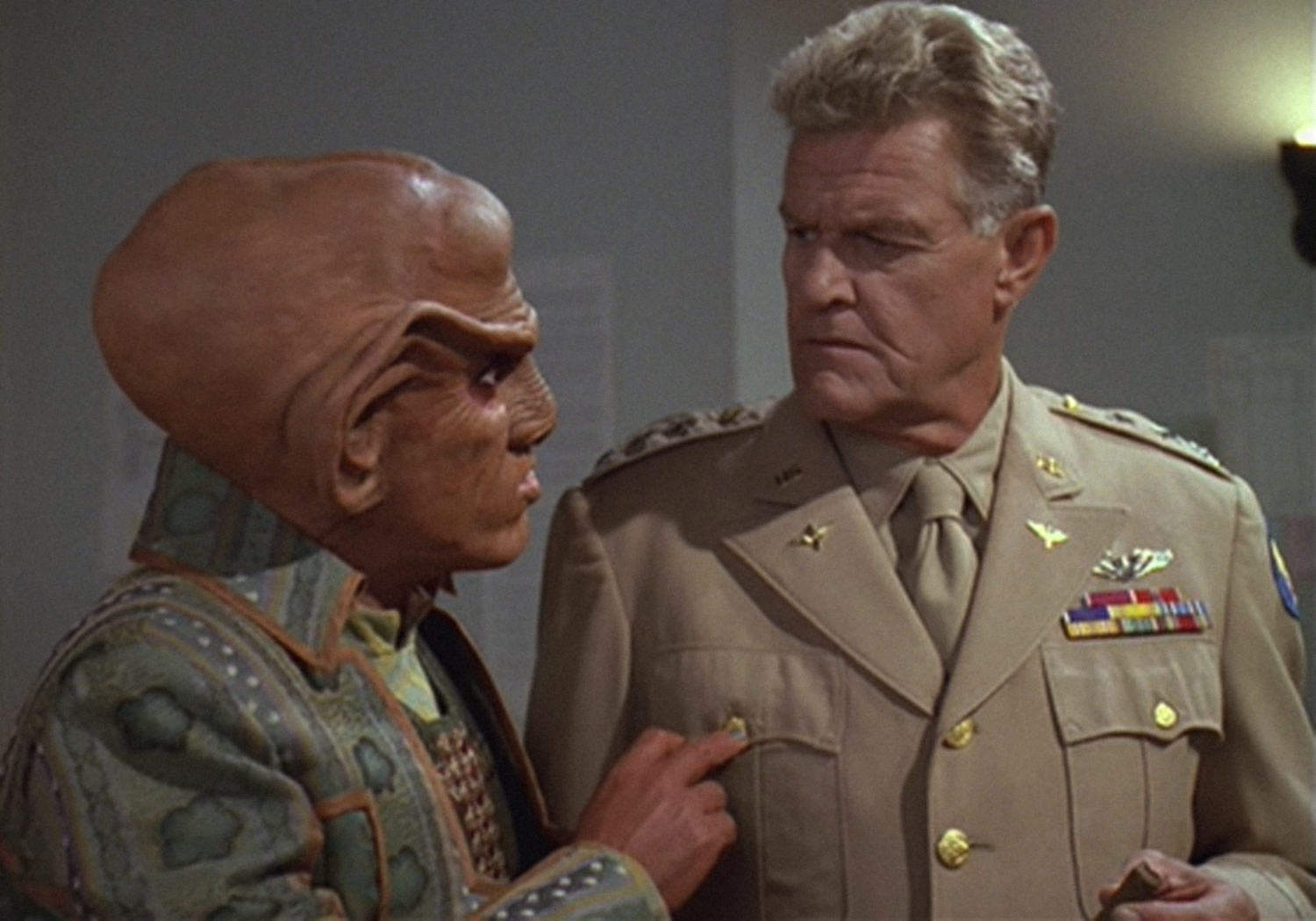
“Little Green Men” (1995), a season-four episode in which Quark and his brother, Rom, are transporting Nog, Rom’s son, to Earth, where he will attend Starfleet Academy as the first Ferengi cadet. Quark has loaded aboard ship a quantity of the volatile and illegal substance kemocite, his intention having been to take advantage of a smuggling opportunity and thus turn the trip into a profitable venture.
But as they approach Earth, a malfunction prevents their shuttle from dropping out of warp. Rom, the engineer in the group, comes up with the solution of flooding the cargo hold with plasma, which reacts with the unstable kemocite and causes the warp core to shut down, allowing the vessel to return to normal space. The gambit works, but also has the effect of flinging them backwards in time to July of 1947, where they crash-land near Roswell, New Mexico. They awaken from their ordeal in the custody of the U. S. military, earning them an important entry in modern UFO mythology!
9) What was the name of that short-lived TV series about a pair of Air Force officers assigned to investigate UFO incidents? It aired on NBC not long after the theatrical release of Spielberg’s Close Encounters of the Third Kind.
Project U.F.O. (1978-1979) tapped into the revived interest in unidentified flying objects generated by Steven Spielberg’s 1977 blockbuster.
Dragnet producer and star Jack Webb co-created the show, pouring over genuine Project Blue Book files to find story ideas for the series. Often, episodes offered an open-ended denouement, suggesting in the closing minutes that the conventional explanation put forward for a given flying saucer sighting was, perhaps, not the truth of the matter, but that the UFO in question had, in fact, been the real thing.
The series’ exceptional UFO miniatures were fashioned from a variety of store-bought scale-model kits.
10) What was the name of that old sci-fi/horror TV movie about a construction crew who find themselves stalked by one of their earth-moving vehicles, which seems somehow “possessed” by a strange, malevolent, otherworldly force?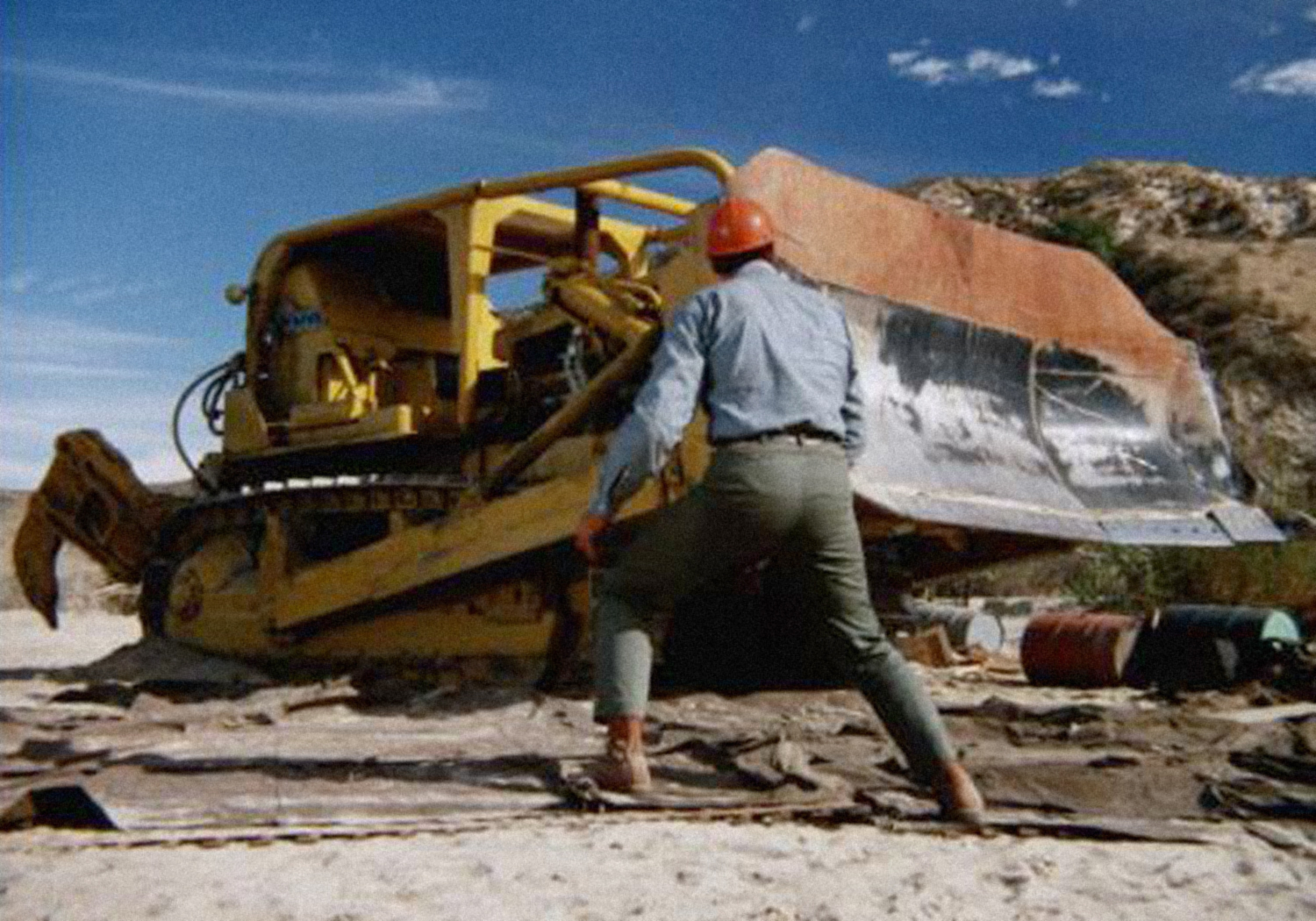
Killdozer! (1974), an ABC made-for-television movie, was based on Theodore Sturgeon’s 1944 novella of the same name.
A construction crew is building an airfield on a remote, uninhabited island. While operating a bulldozer, one of the workers unearths an ancient meteor, from which a weird, ethereal aura is emitted, seemingly “inhabiting” the earth-moving vehicle, which soon takes on an inexplicable “life” of its own and begins attacking and killing the men!
Most critics panned the film for its outlandish premise, finding that the menacing bulldozer came across as more silly than scary. While performances and production values were fairly good, the movie’s pacing was described by one modern reviewer as “sluggish,” and the whole exercise was gauged as largely absent tension and thrills for a film marketed as an “ABC suspense movie.” Nevertheless, over the years, Killdozer! has become something of a sci-fi cult classic!
11) What was the title of the seaQuest episode that marked the final appearance of Roy Scheider’s Captain Nathan Bridger?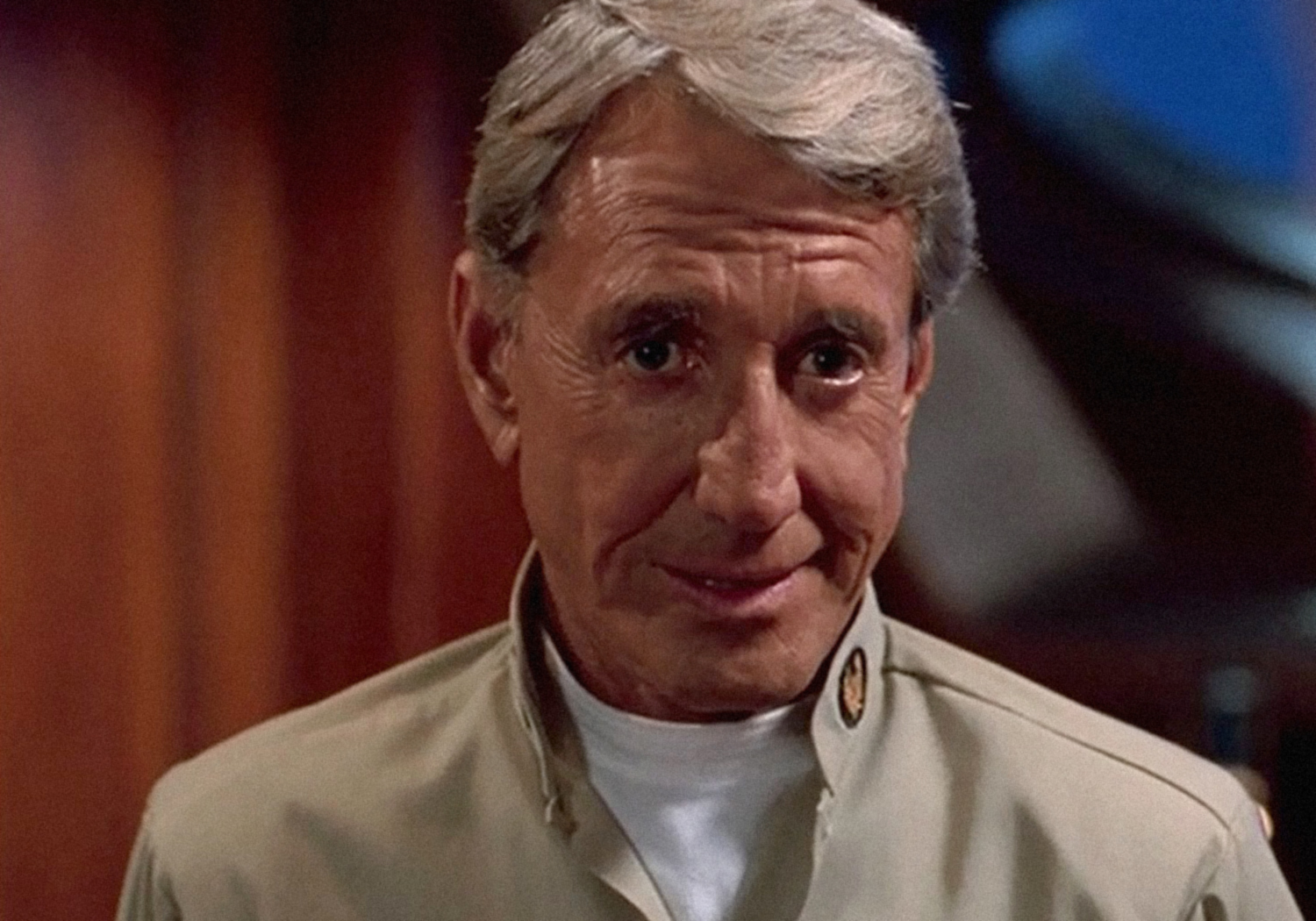
“Good Soldiers” (1995), a season-three episode of the show in which Bridger, Commander Ford, and several other seaQuest personnel infiltrate a former UEO base, now controlled by the fascist Alliance of Macronesia, in search of top-secret data crystals containing information on certain crimes against humanity committed 20 years earlier, to which Bridger and Ford were connected!
Series star Roy Scheider was bitterly unhappy and quite vocal about what he felt were the more gimmicky, monster-of-the-week, ridiculous sci-fi plotlines of seaQuest DSV’s second season. “Childish trash,” he called the stories. “Old, tired, time-warp robot crap!”
Scheider asked that he be released from his contract, a request agreed to by producers with the proviso that he make several appearances as Bridger in season three, which saw the series jump ahead ten years into the future. Renamed seaQuest 2032, Bridger retired in the season premiere and was replaced by a new captain. His later appearance in “Good Soldiers” was the character’s last, not only of the season, but of the series, which was shortly thereafter cancelled, having produced over its run a total of 57 episodes.
12) What was the name of that cool but convoluted sci-fi series? You know, the one with these pale-skinned, bald dudes in black suits called “Observers,” and a parallel universe, plus an alternate timeline, and this team of special investigators trying to figure out WTF was going on!
Fringe (2008-2013) was part police procedural, part mind-bending sci-fi/fantasy and was built upon an arcane and complex mythology. The story arc followed the Fringe Division’s investigations of unusual incidents related to highly speculative, avant-garde science.
Included on the team was an archetypal “mad scientist,” Walter Bishop, played by John Noble, who had been institutionalized for 17 years, and who, with his friend William Bell, had earlier discovered the alternate universe at the center of the series. Most of the principal cast also portrayed their doppelgangers in this more technologically advanced alternate universe, and Bell was played by recurring guest star Leonard Nimoy.
The series was created by genre heavyweights J. J. Abrams, Alex Kurtzman, and Roberto Orci, who have been involved in several high-profile SF/F projects over the years, including the rebooted Star Trek. The show ran for five seasons, producing a total of 100 episodes.
13) What was the name of that cult sci-fi/horror series about a teenaged boy who finds weirdness afoot in the small town to which his family has moved? There were inside-jokes and references to the horror genre in particular worked into each episode!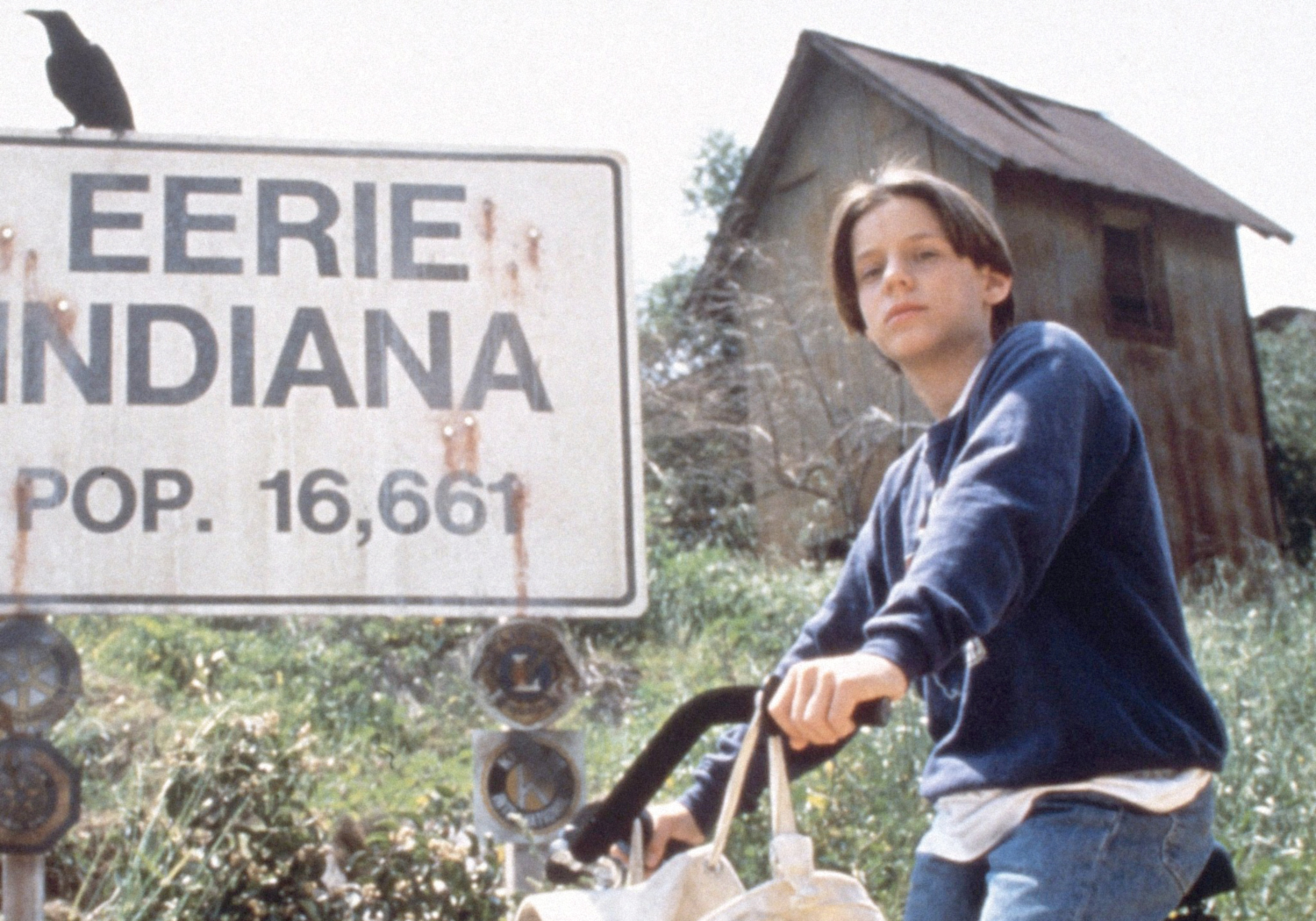
Eerie, Indiana (1991-1992), a clever, bizarre, wryly absurdist, sci-fi/horror series, was well-received by critics and boasted a crisp cast and the occasional directorial talents of B-movie fan Joe Dante, who also served as a creative consultant on the series.
Dante, a co-creator of the Trailers from Hell web series, launched in 2007, has helmed such films as Piranha (1978), The Howling (1981), Gremlins (1984), and Matinee (1993), directed a chapter of Twilight Zone: The Movie (1983) and sequences in Amazon Women on the Moon (1987), as well as episodes of Amazing Stories (1985-1987) and, more recently, Masters of Horror (2005-2006) and Salem (2015-2016).
Despite the above-average quality of the show and stacks of positive reviews, Eerie, Indiana failed to attract a sufficient number of viewers to prevent NBC from cancelling the series after just 19 episodes.
However, the show captured the imaginations of a fresh audience when it was rerun Saturday mornings on Fox Kids a few years later, prompting the network to greenlight a sequel, Eerie, Indiana: The Other Dimension (1998), which was produced and filmed in Toronto.
12) THANK YOU!
We’d like to thank Keith Braithwaite, Joe Aspler, and Cathy Palmer-Lister for their contributions to today’s programming. We also wish to thank all supporting contributors to this, our May 2022 e-meeting.
And of course, to those who visited with us this afternoon, and took in our online get-together, thank you for your interest and attention, and don’t forget to comment on today’s virtual meeting.
13) WRAP-UP (SIGN-OFF) AND CLUB’S NEXT ONLINE MEETING DATE
We sincerely hope you have enjoyed your time with us these past few hours, we again thank you for dropping in, and we ask that you pop in regularly here at www.MonSFFA.ca for additional content. Check, too, for any updates as to when the club expects a return to regular, face-to-face meetings.
We will again convene at www.MonSFFA.ca on Saturday, June 4, for another in our ongoing series of MonSFFA e-Meetings!
Note that we are assembling a week earlier than usual next month in order to avoid conflicting with the local Scintillation SF convention (June 10-12; www.scintillation.ca), and also because we are organizing a field trip for late June, details to be announced next month.